- Drives well as a pure EV
- Spacious interior, particularly the second row
- Good warranty and service package
- Infotainment system needs a big refresh
- Poor hybrid fuel efficiency
- Lack of drivetrain refinement
As we approach 2023, electric vehicles are all over the news cycle and we’re sure were the topic of many conversations over Christmas lunch around Australia. While EVs have found their way into many Australian garages during 2022, sales only make a tiny percentage of total Australian car new sales. There are many reasons for this including high prices, lack of availability, a limited choice of models and something that seems to strike fear into the hearts of many: range anxiety. Enter the plug-in hybrid – promising to mix benefits of both EVs and ICE powered vehicles – namely the benefits of an EV, but with a ‘backup’ petrol engine to eliminate fears of range anxiety. We recently got to spend a week in Australia’s cheapest plug-in hybrid: the 2022 MG HS Plus EV Excite.
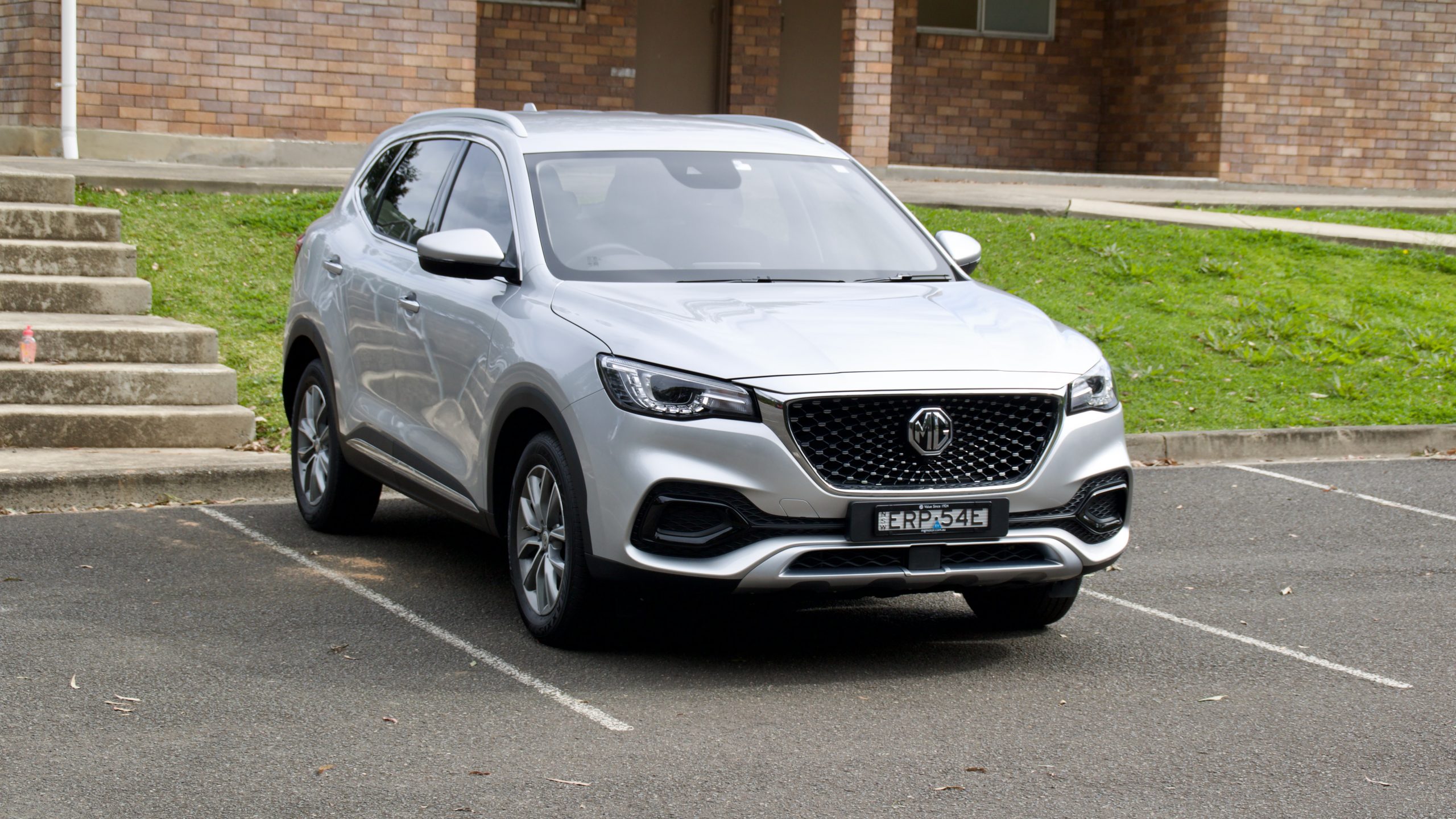
MG has had a stunner of a year, going from strength to strength, filling voids left at the lower end of the market, with brands such as Toyota, Mazda, Honda and Hyundai having all but abandoned producing . price leading cars. Does the 2022 MG HS Plus EV deliver on promises of offering a no compromise stopgap between ICE and fully electric vehicles? Read on to find out.
Price & Equipment: 8/10
The 2022 MG HS Plus EV Excite is the the cheaper of the two plug-in hybrid versions of the HS mid-size SUV and has a drive-away price of $49,700. The range tops out with the Essence model for $52,700 drive away.
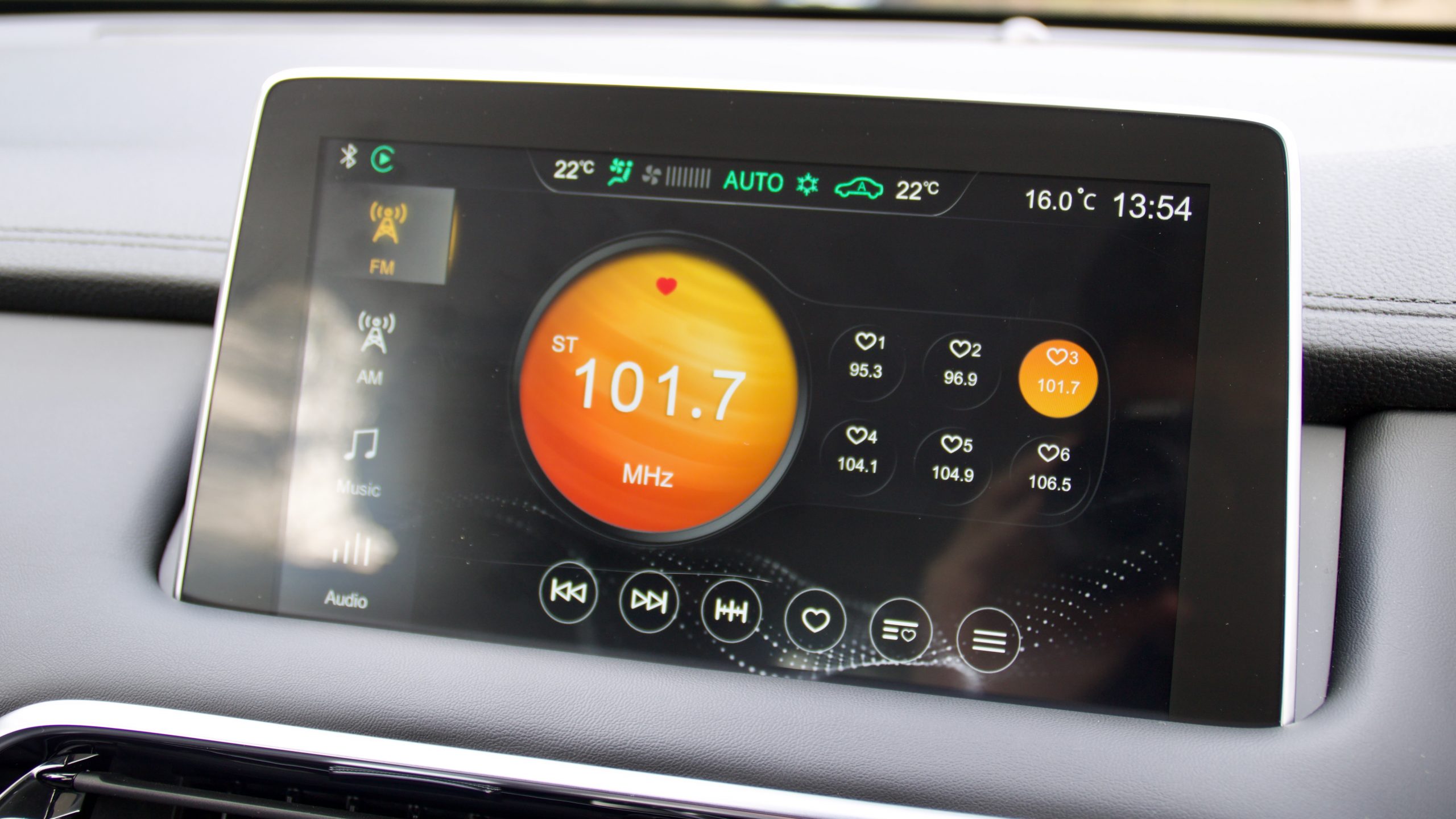
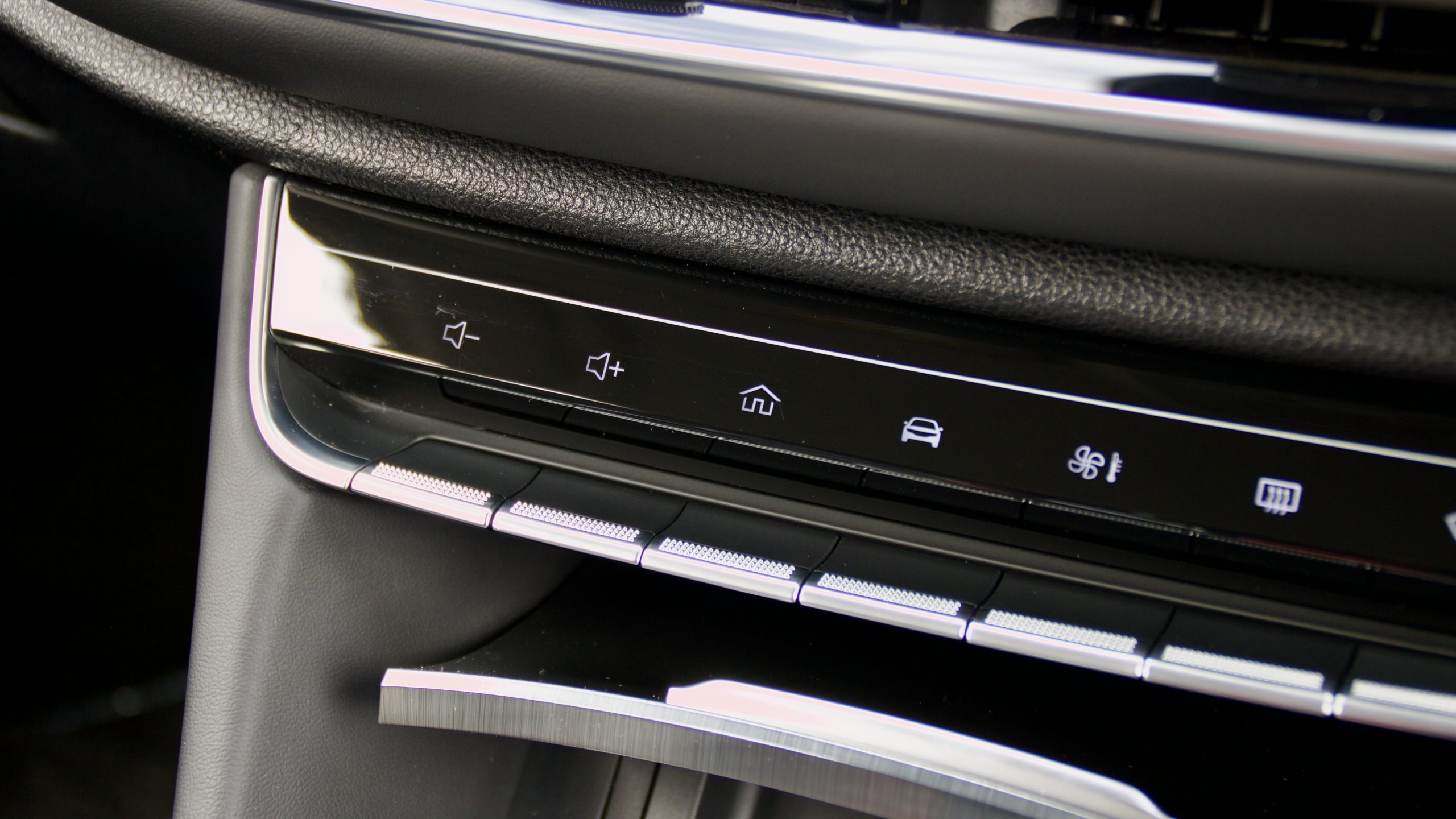
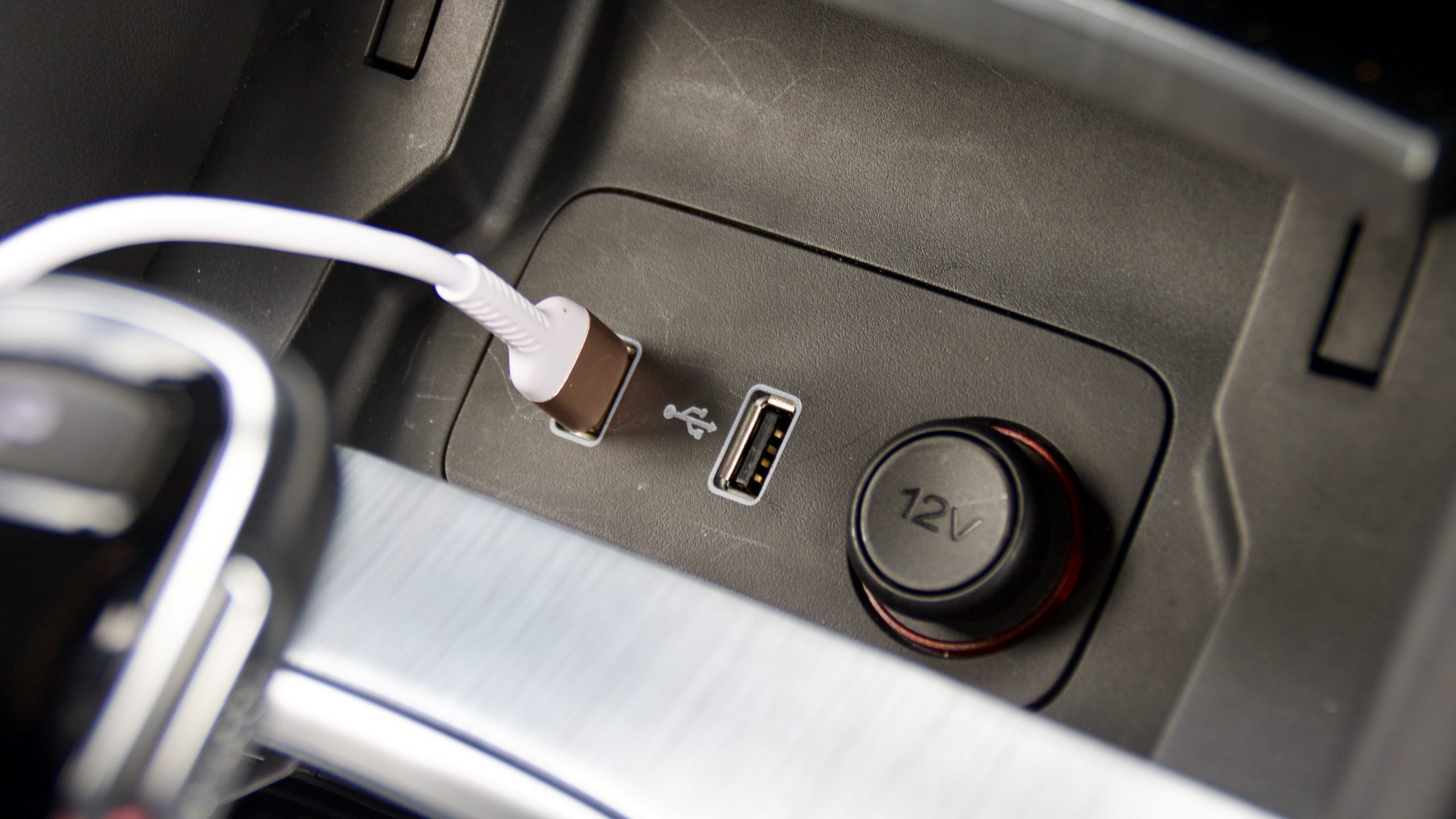
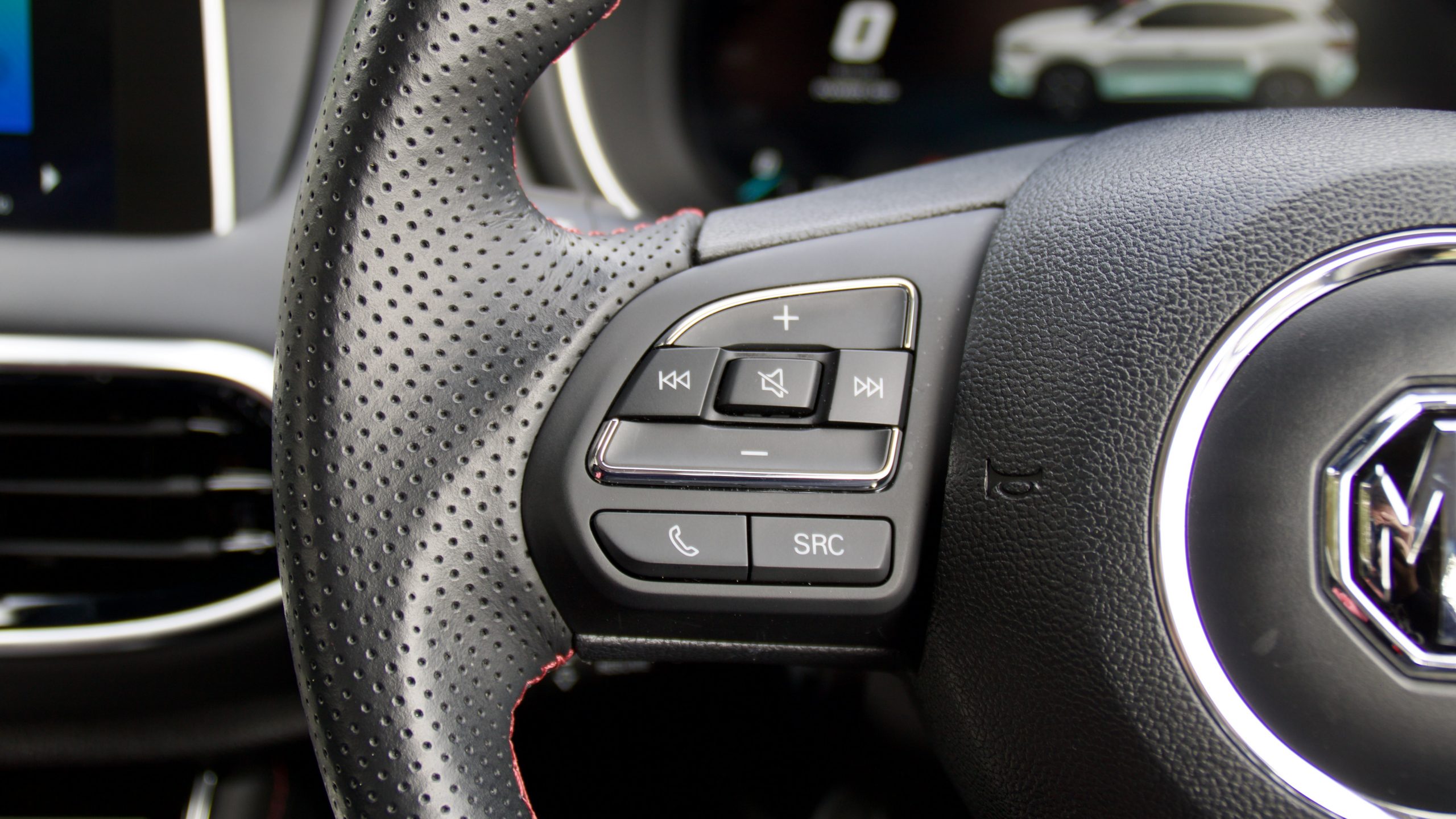
Standard equipment for the Excite includes 17-inch alloy wheels, automatic projector halogen headlights with auto high beam, LED daytime running lights, roof rails, keyless entry and start, heated and auto-folding mirrors, six-way electric adjustment for the driver’s seat, heated front seats, artificial leather trim including the gear knob and steering wheel, dual-zone climate control with rear vents, a 12.3-inch digital instrument cluster, an auto-dimming rearview mirror, a 10.1-inch touchscreen infotainment system with wired Apple CarPlay and Android Auto, satellite navigation, a six-speaker sound system, rain-sensing wipers and four USB-A points.
The petrol HS carries a five-star ANCAP rating, but the PHEV is yet to be tested. Safety equipment includes six airbags (dual front, dual front side and curtain airbags to both rows), an anti-theft alarm, adaptive cruise control with start-stop functionality, forward collision warning, automatic emergency braking (AEB), lane departure alert, blind-spot monitoring, rear cross traffic alert, road sign recognition a reversing camera and rear parking sensors.
There aren’t any options available for the HS Plus EV besides choice of colour – three colours are available all at no cost: ‘New Pearl White’, ‘Diamond Red’ and our test car’s ’Stirling Silver’.
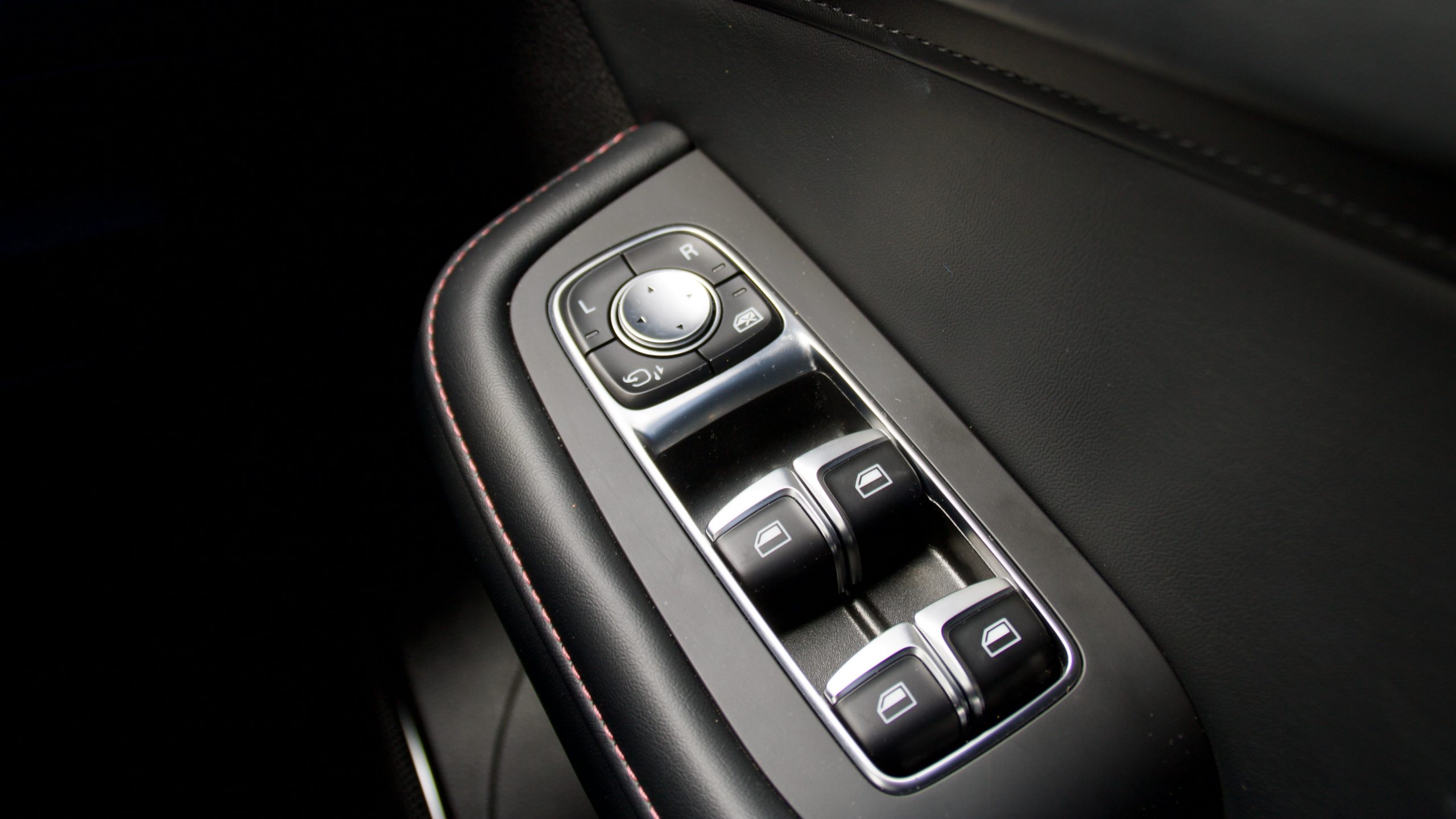
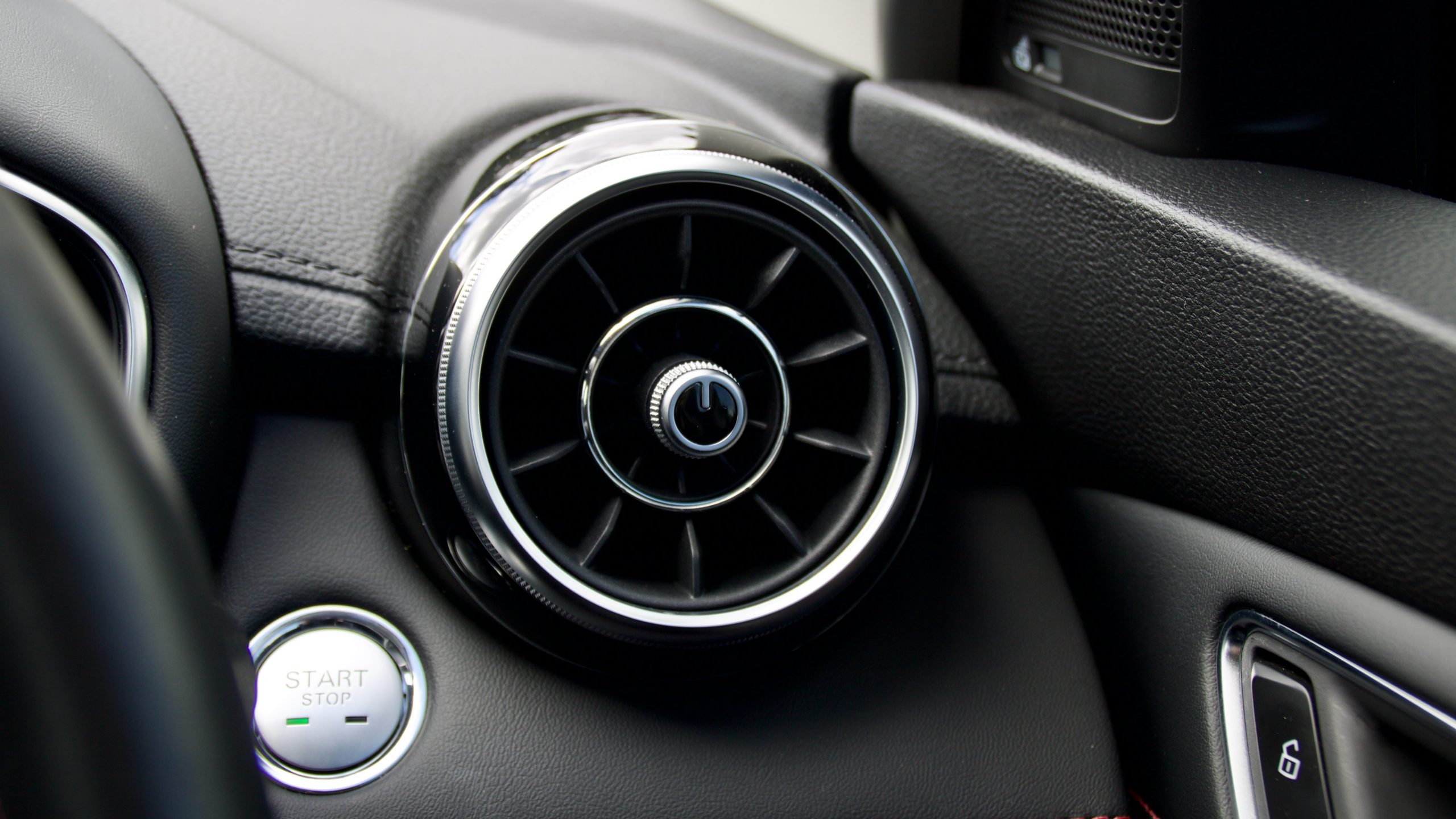
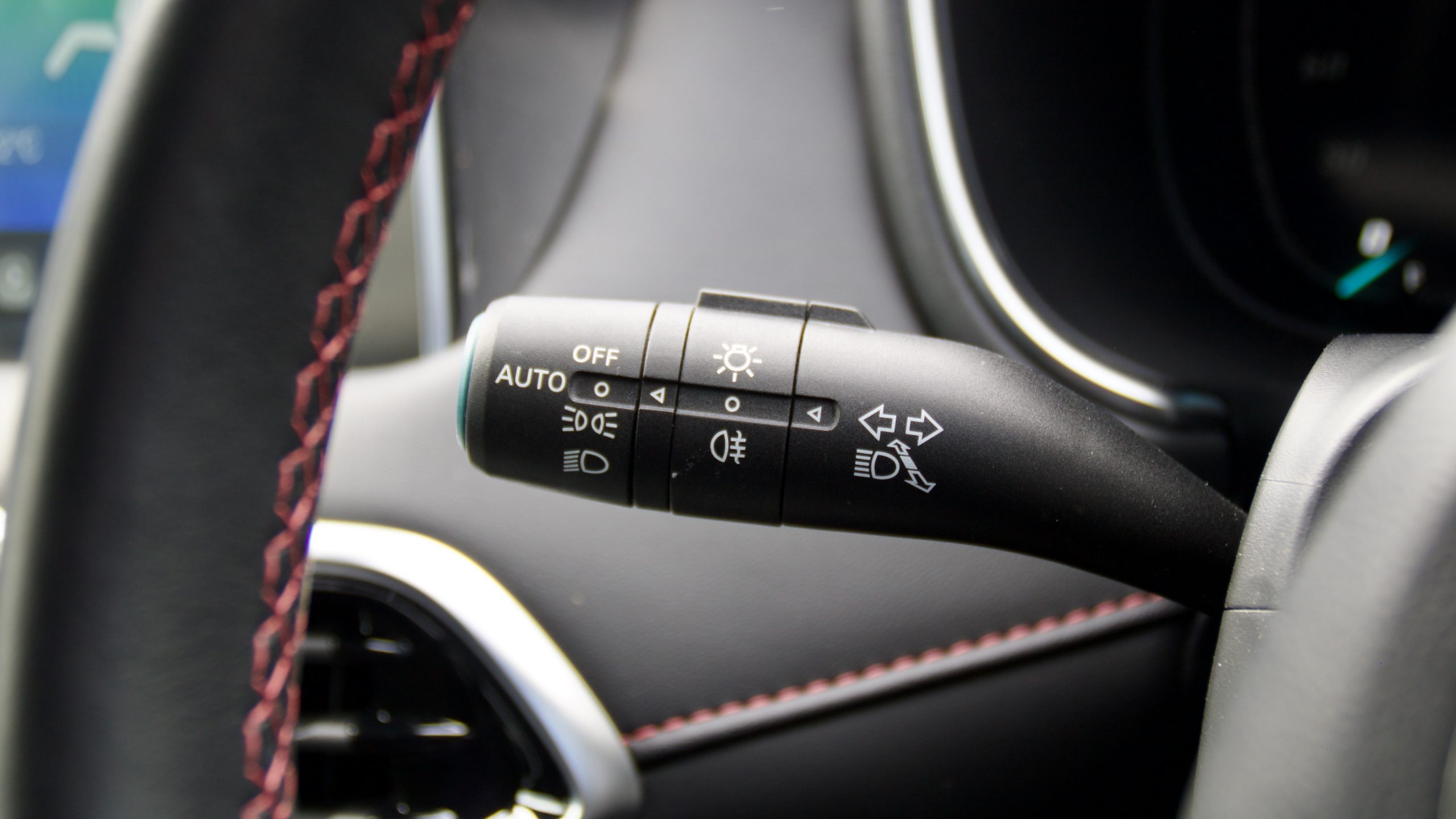
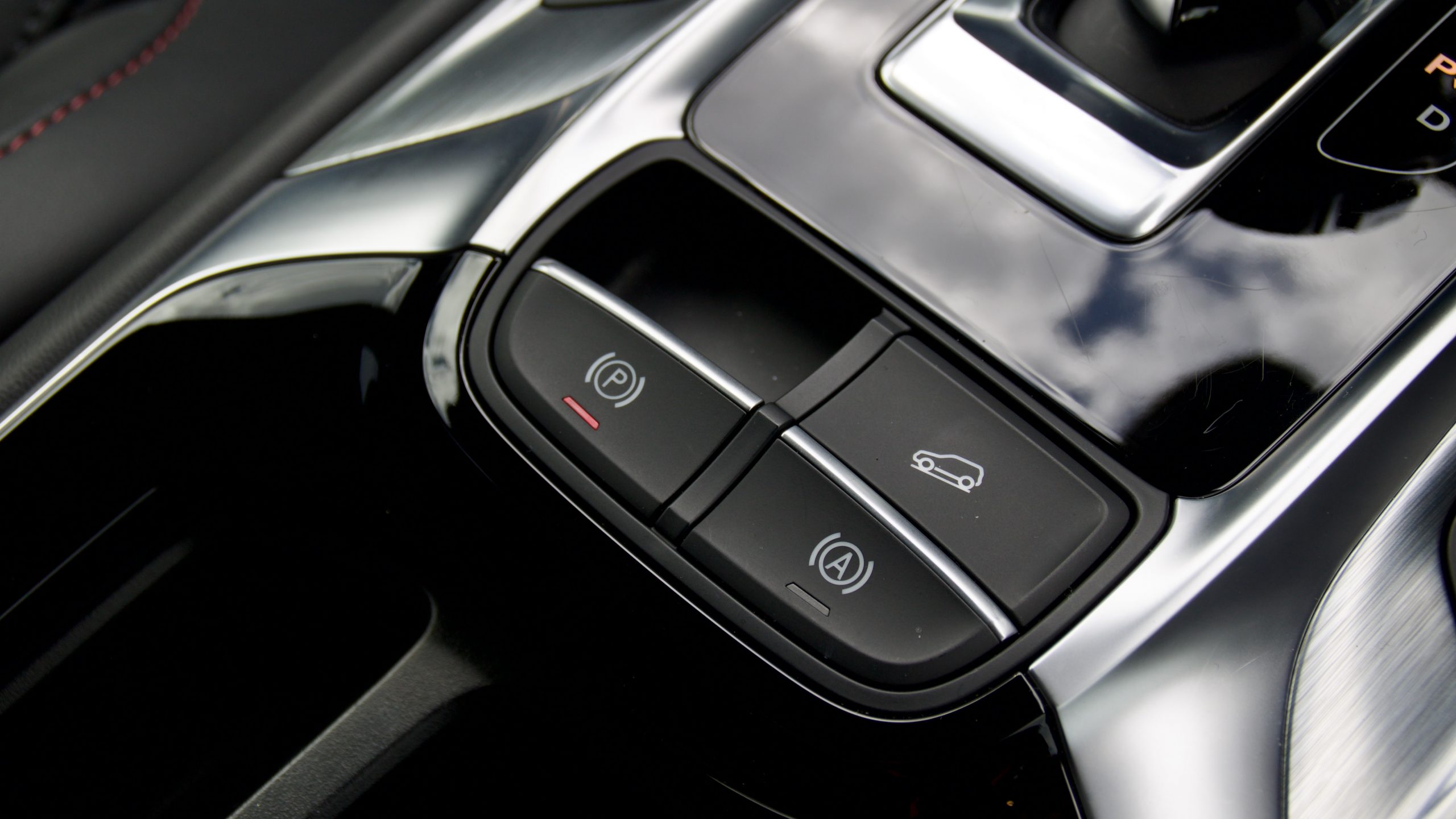
There aren’t many plug-in hybrids for sale on the Australian market, but we found two comparable vehicles in the Mitsubishi Eclipse Cross PHEV Aspire AWD which is priced around $55,400 drive-away and Ford Escape ST-Line PHEV which is around $60,500 drive-away.
Compared to the Eclipse Cross PHEV Aspire AWD, the HS Plus EV Excite has road sign recognition, driver’s seat manual lumbar adjustment, a larger 10.1-inch infotainment touchscreen, satellite navigation, four USB charging ports and a fully digital instrument cluster. The Eclipse Cross fights back with digital radio, a driver’s knee airbag, front parking sensors, an eight speaker sound system, LED headlights, fog lights, a panoramic view monitor and larger 18 inch alloys.
The Ford Escape ST-Line PHEV has larger 18-inch alloys, digital radio, remote connect allowing control of car functions via a phone app, a wireless phone charger, a 10-speaker sound system, ambient interior lighting, sports alloy pedals, rear cross traffic alert featuring auto reverse braking, driver attention monitoring, automatic emergency calling/assistance, lane keeping assistance, front parking sensors, tyre pressure monitoring, 10-way power adjustment for the driver’s seat, four extra ways of adjustment for the passenger seat, LED headlights, front fog lights and automatic parking assistance over the MG. The MG fights back with a larger 10.1-inch touchscreen and front seat heating.
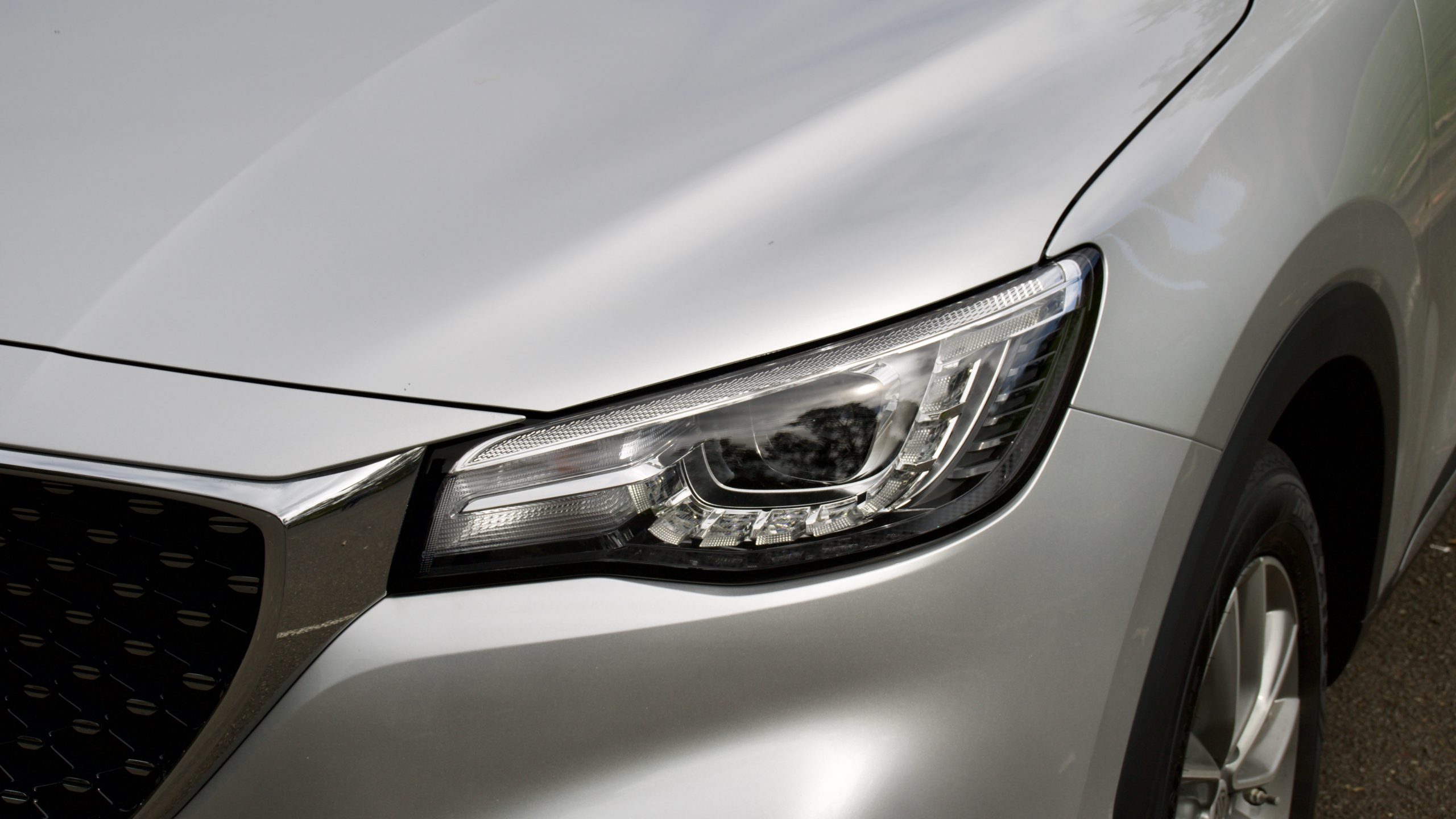
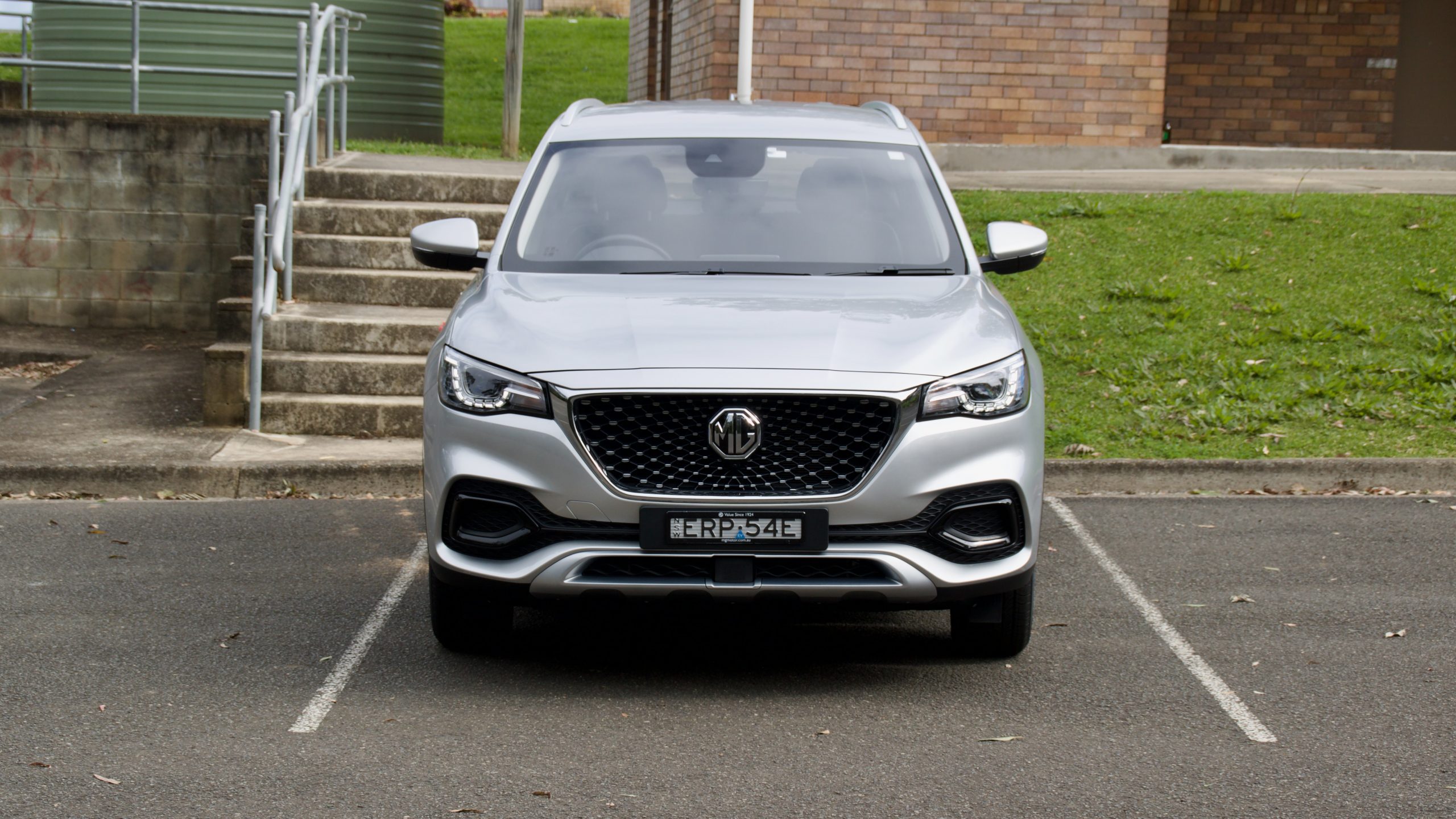
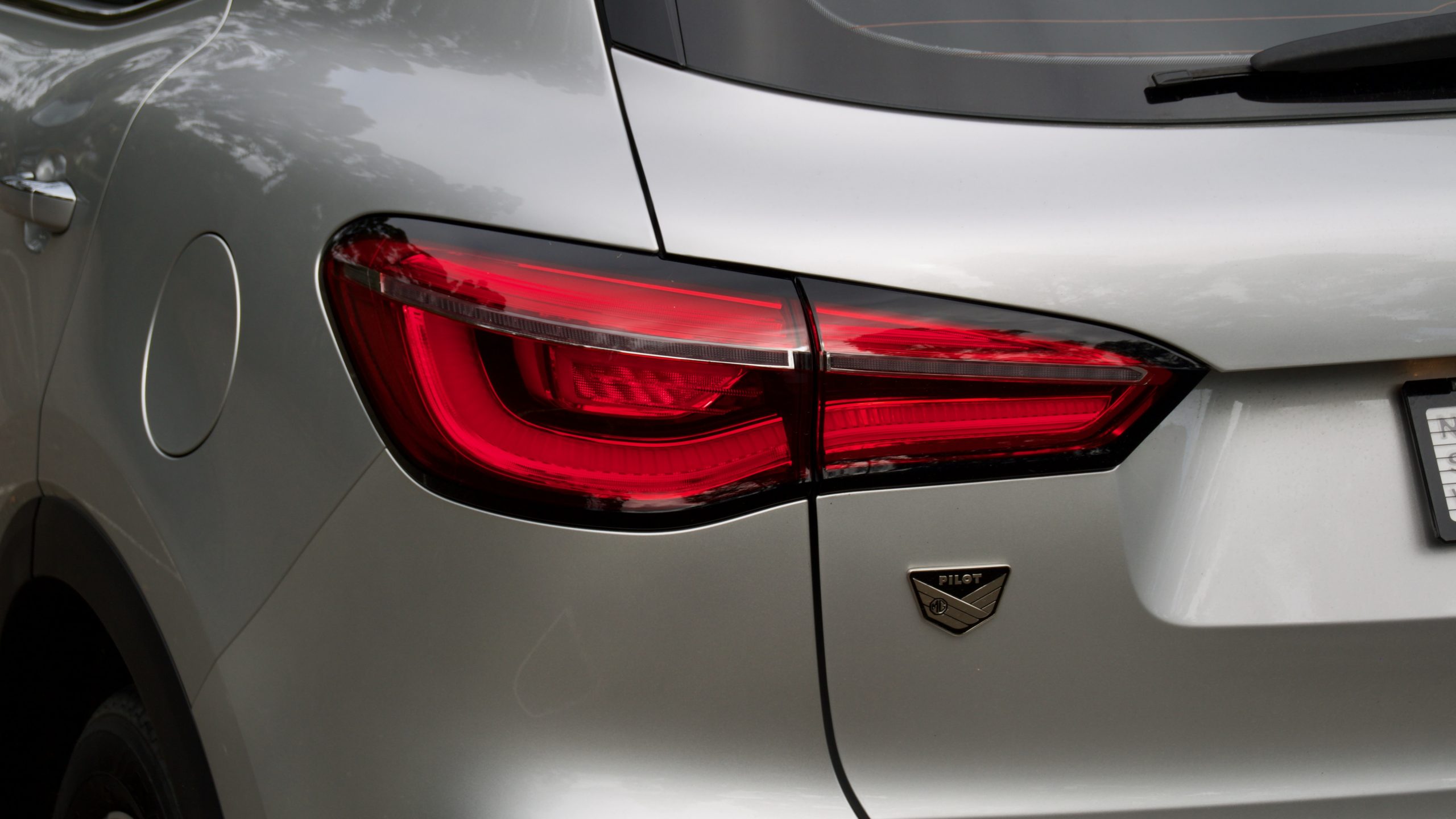
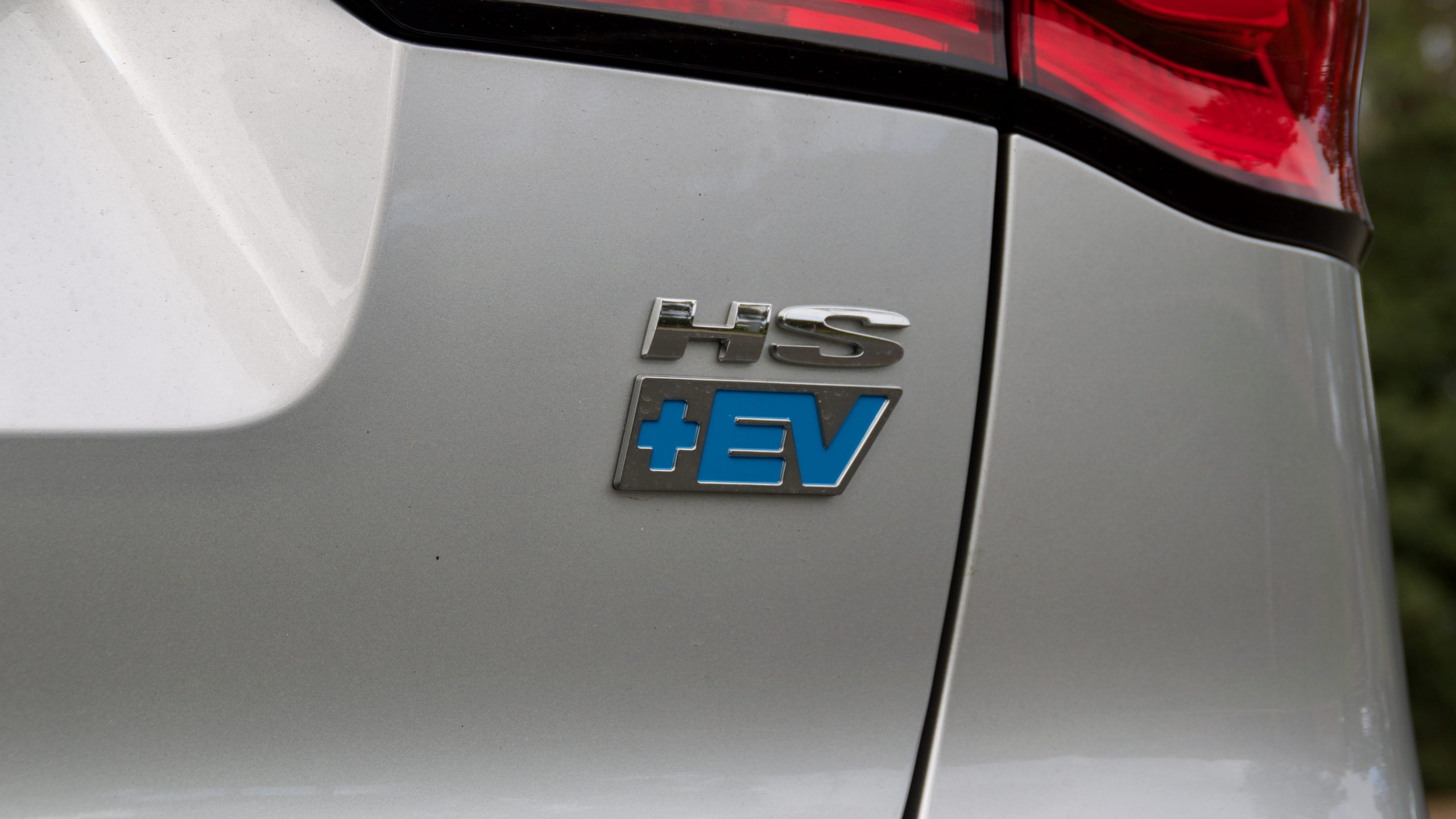
On a spec-by-spec comparison, the HS Plus EV Excite looks like good value compared to competitors, as while the Eclipse Cross and particularly the Escape have plenty of extra equipment, this comes at a $5,000 and $10,000 premium respectively. What perhaps weakens the value equation, is a challenge from within – priced a mere $3,000 extra, is the top spec HS Plus EV Essence. The step up the Essence adds a fair amount of equipment, including: a 360-degree camera, larger wheels, electric adjustment for the passenger seat, LED headlights, fog lights, an electric tailgate and sports seats with leather trim. We’d suggest these additions are worth the small price increase.
Performance & Economy: 6/10
The 2022 MG HS Plus EV Excite teams a 1.5-litre turbocharged four-cylinder engine with an electric motor and a 16.6kWh lithium-ion battery. The petrol engine produces 119kW of power at 5,500rpm and 250Nm of torque at 4,300rpm. The electric motor produces 90kW of power and 230Nm of torque and MG quotes a combined figure of 189kW of power and 370Nm of torque. The transmission is described as a 10-speed unit, but it is actually two seperate transmissions that work in tandem – four and six speed units respectively.
The MG HS Plus EV is at its best when it’s running in purely electric mode – it’s smooth and the electric motor, while the power output isn’t anything to write home about, still makes for brisk acceleration thanks for respectable torque figure. Running the HS in hybrid mode is a less pleasant experience. The transmission setup is odd in practice and somehow manages to exhibit negative attributes of torque converters through lag in shifting, CVTs in droning and feeling strange and DCTs in having a slipping feeling and getting confused.
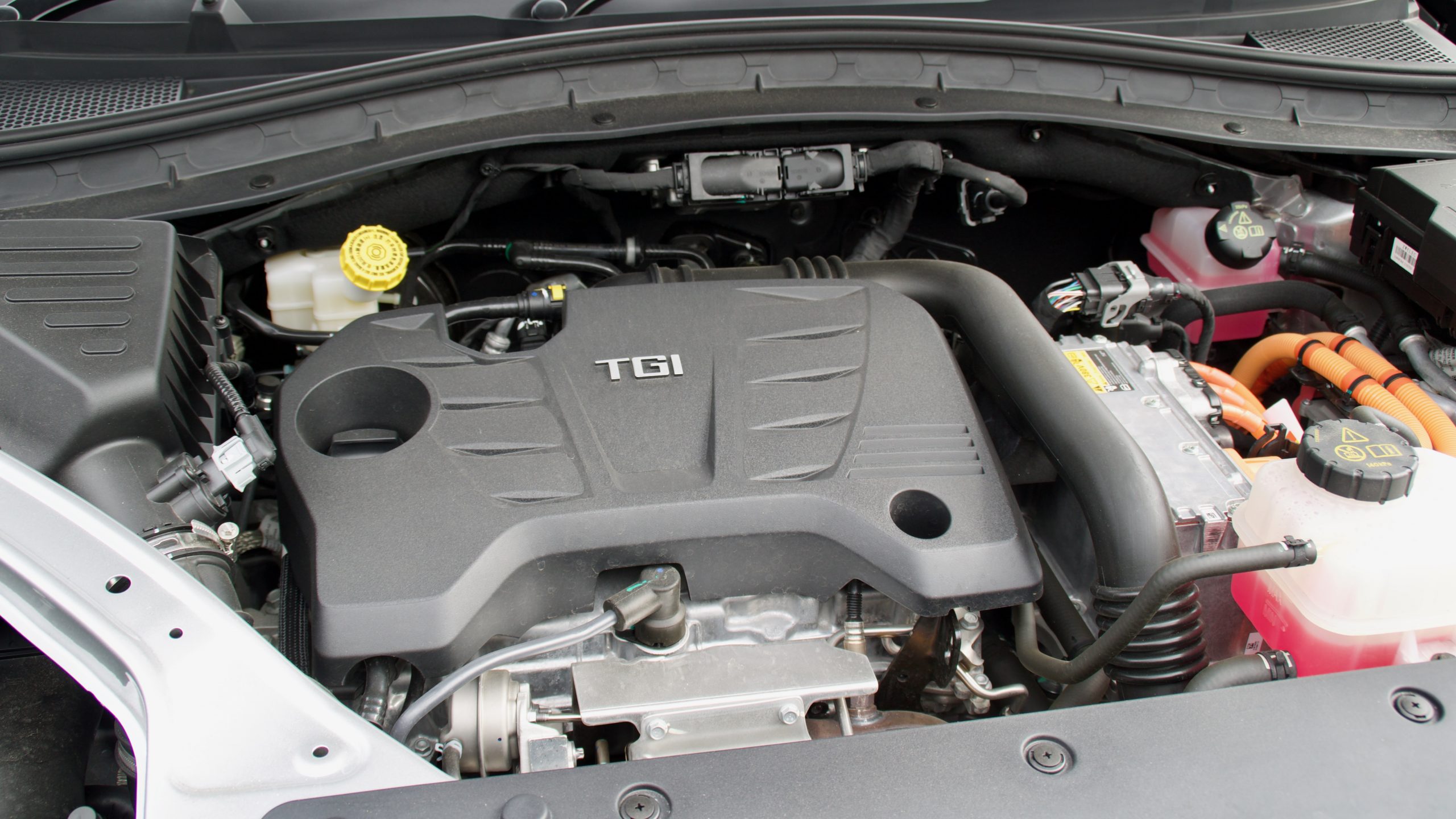
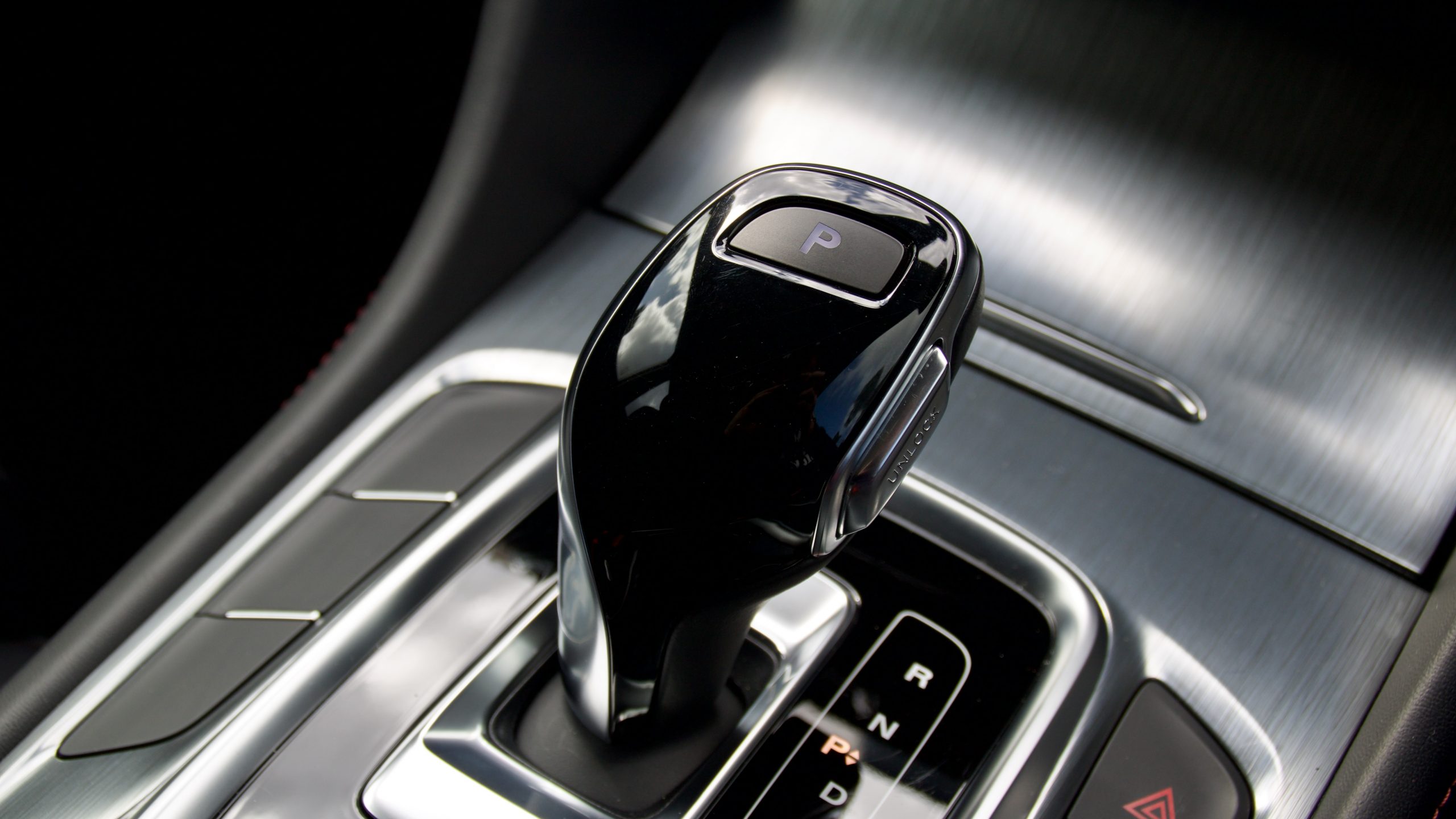
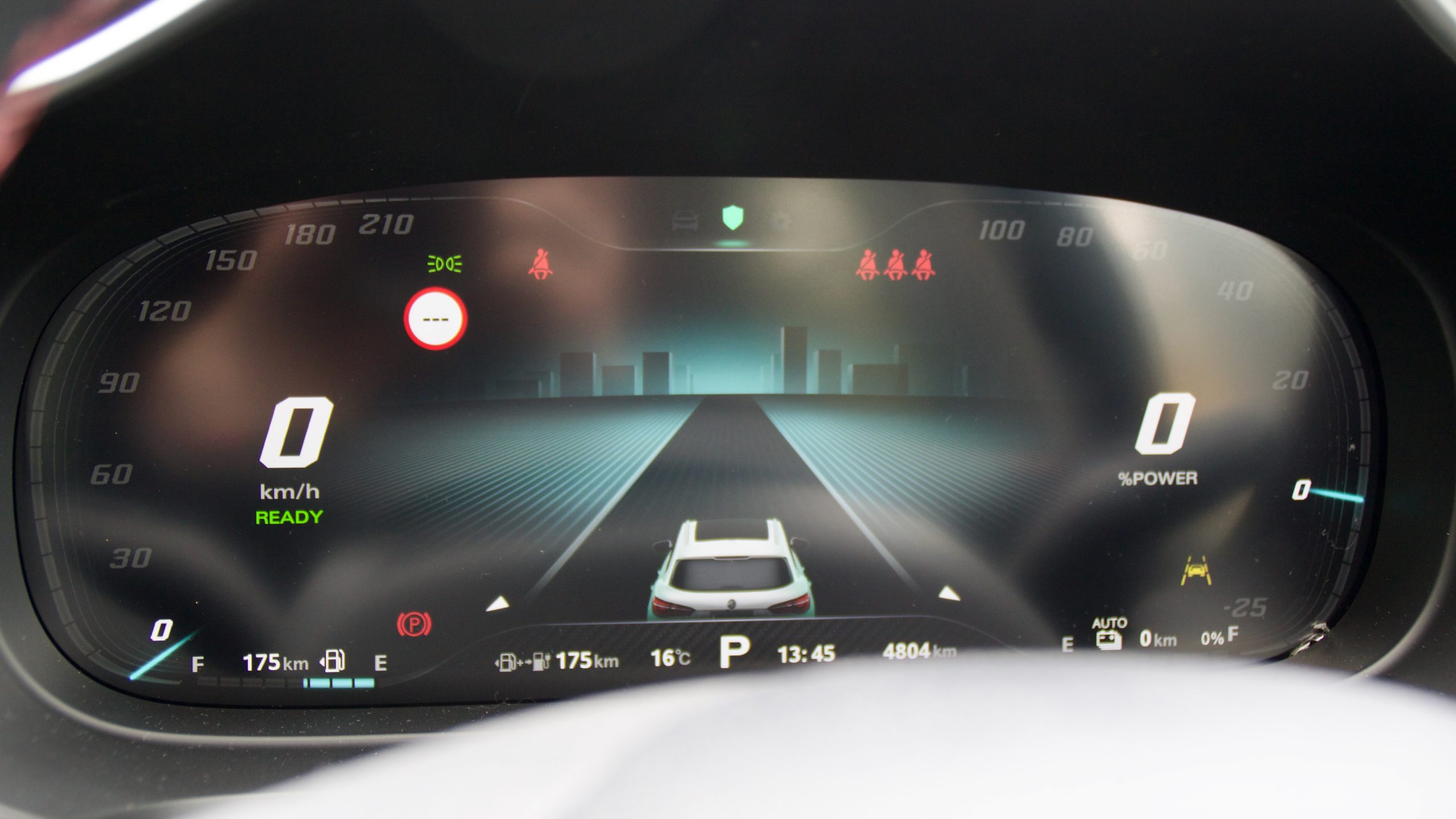
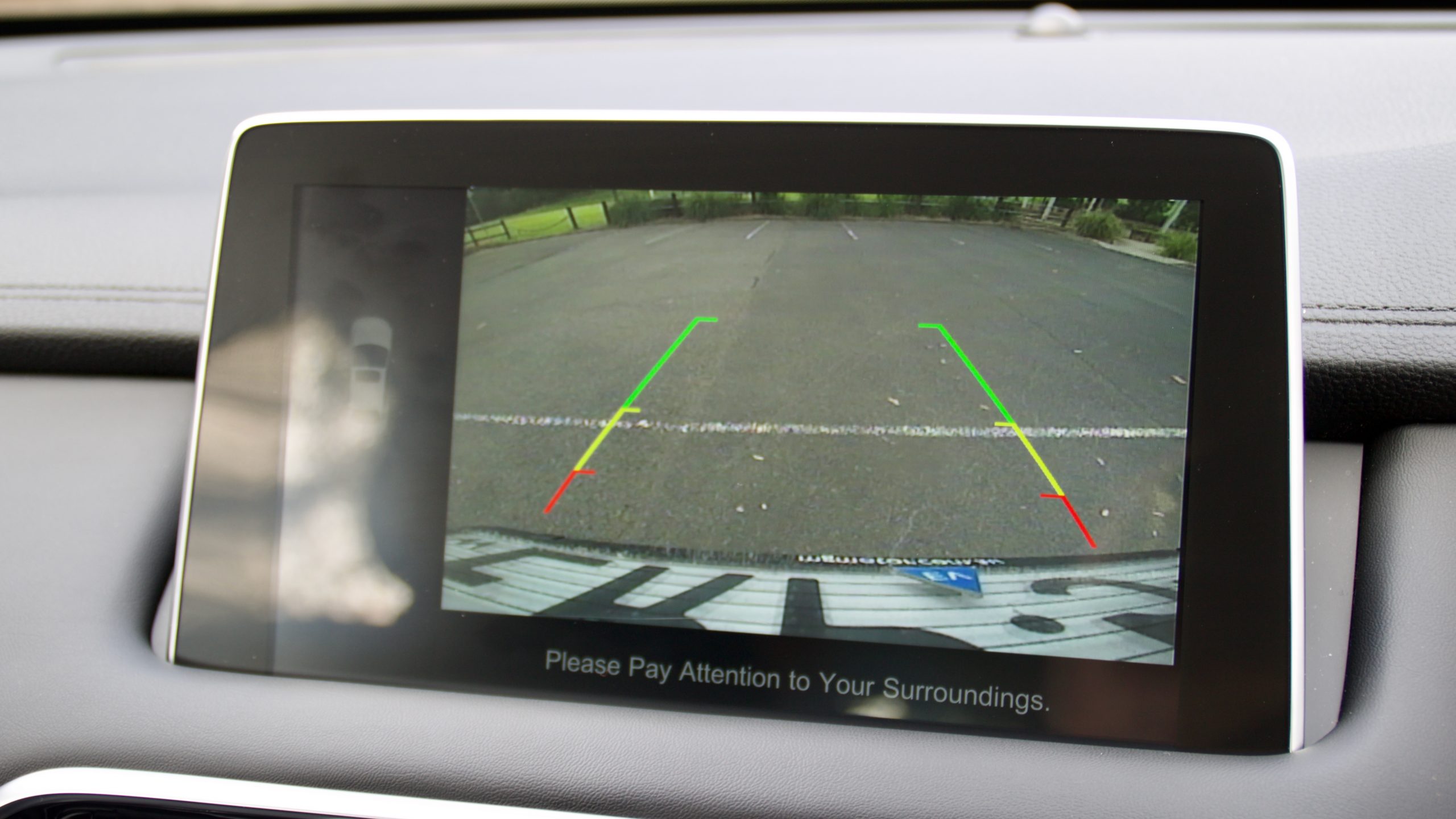
While running as a hybrid, the transition as the petrol engine switches on is not smooth in sound and in vibration transmission into the cabin. The petrol engine also gets thrashy when pushed harder. In better news, in hybrid mode, the HS Plus EV is quick. MG quotes a 0-100km sprint time of 6.9 seconds, which is quick for a medium SUV – and we think the claim feels pretty accurate.
We think the biggest problem with the HS Plus EV is that in driving, on every start it defaults to hybrid mode, regardless of battery charge. Other plug-in hybrids that we’ve tested will run as a pure EV until the battery has run out, then switching to hybrid. To add insult to injury, as a hybrid, the HS Plus EV isn’t great for efficiency. The petrol engine comes on early and switches off far less than most competitors do and once the battery is fully depleted it barely charges, unlike a closed loop hybrid, further detracting from the efficiency. Once the battery fully drains, the HS seems to run as a petrol only vehicle.
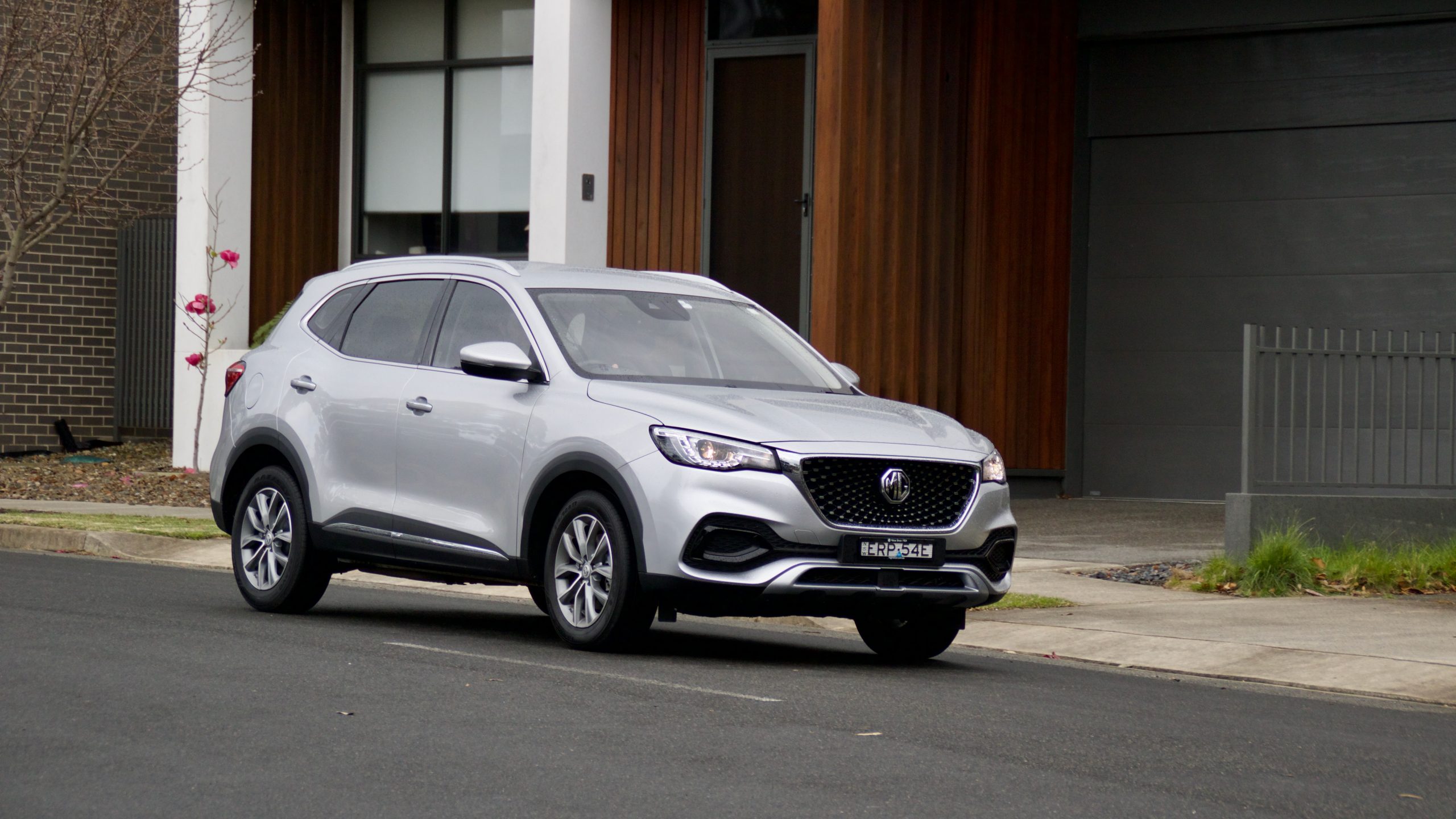
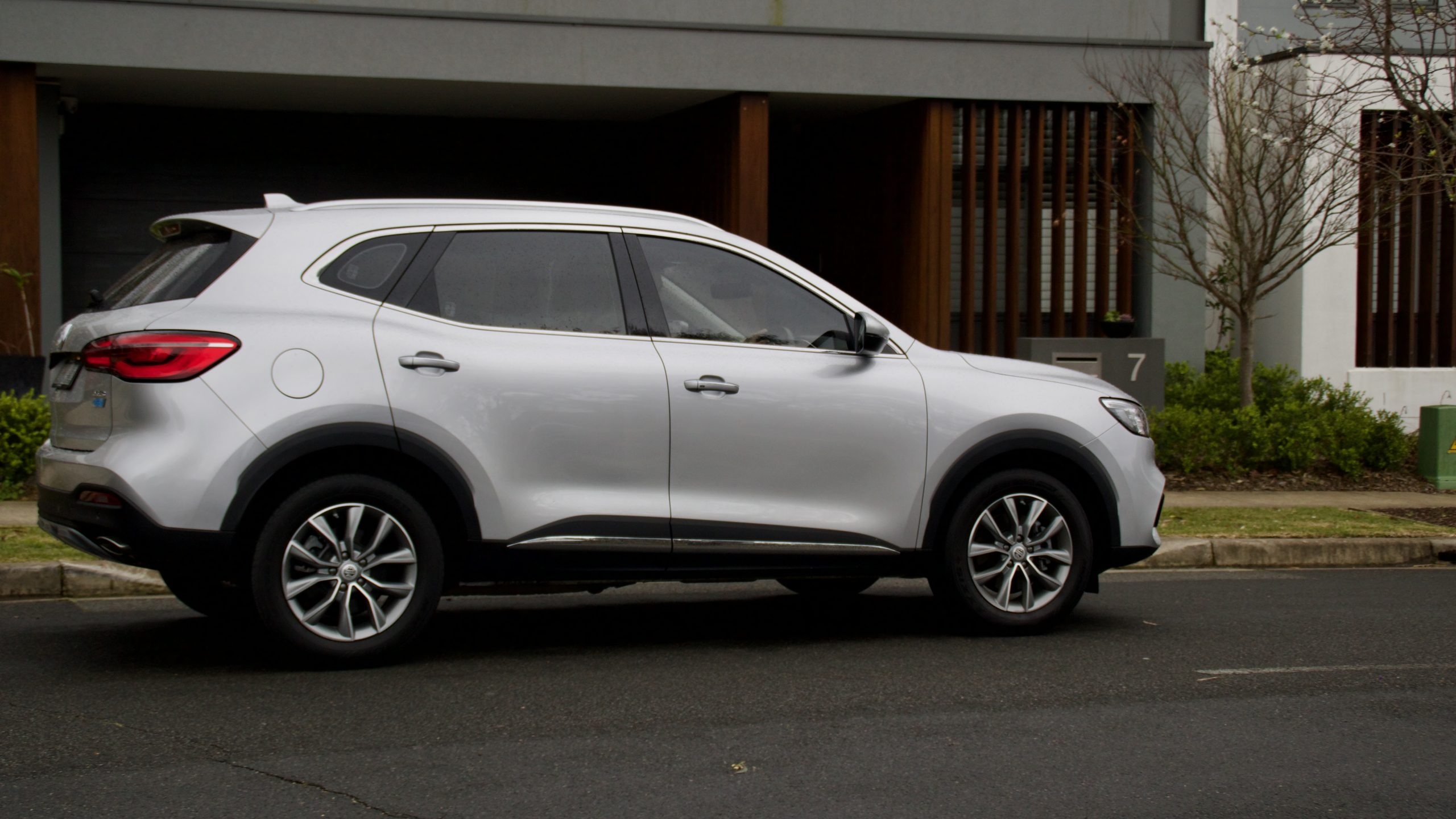
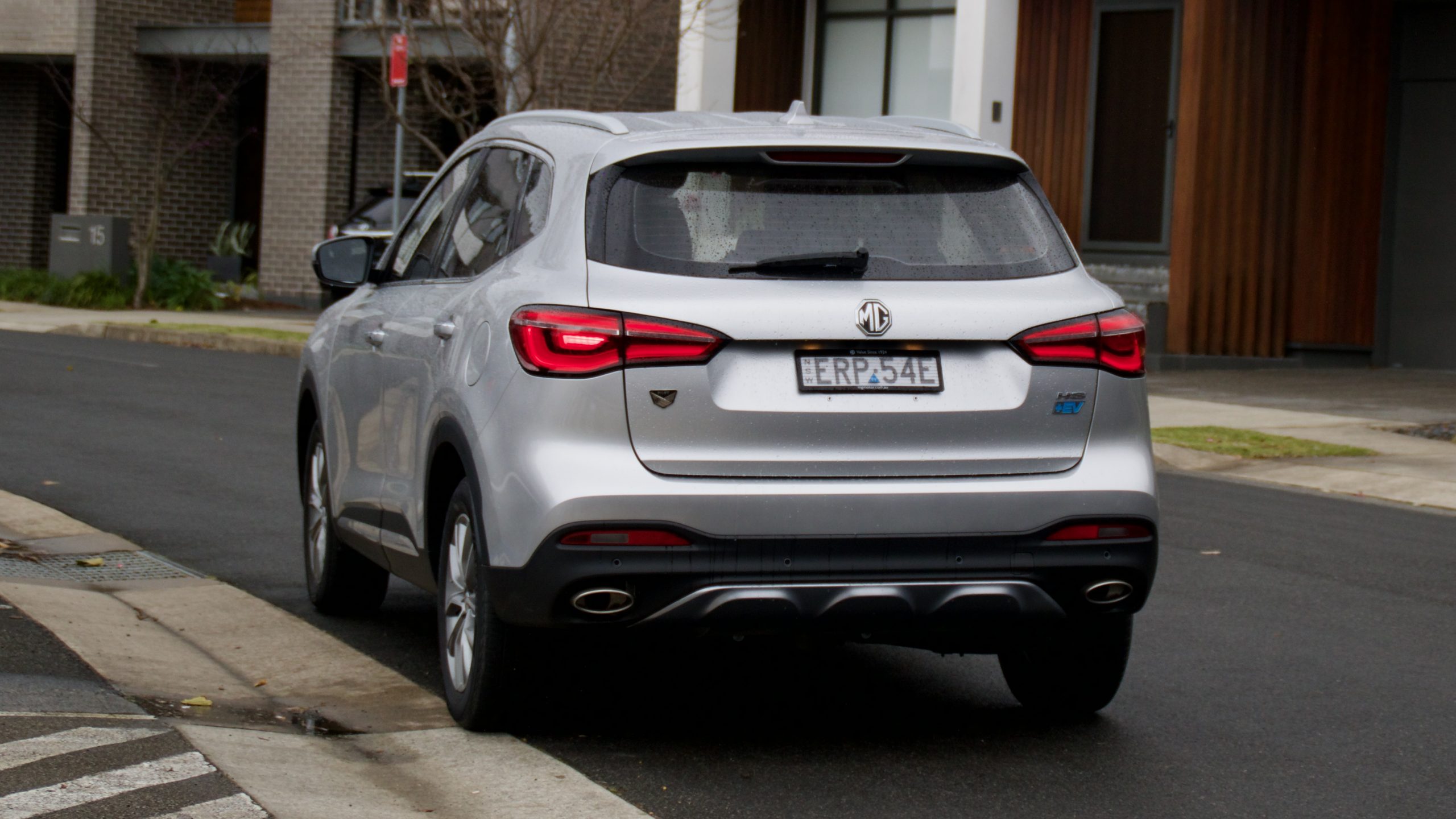
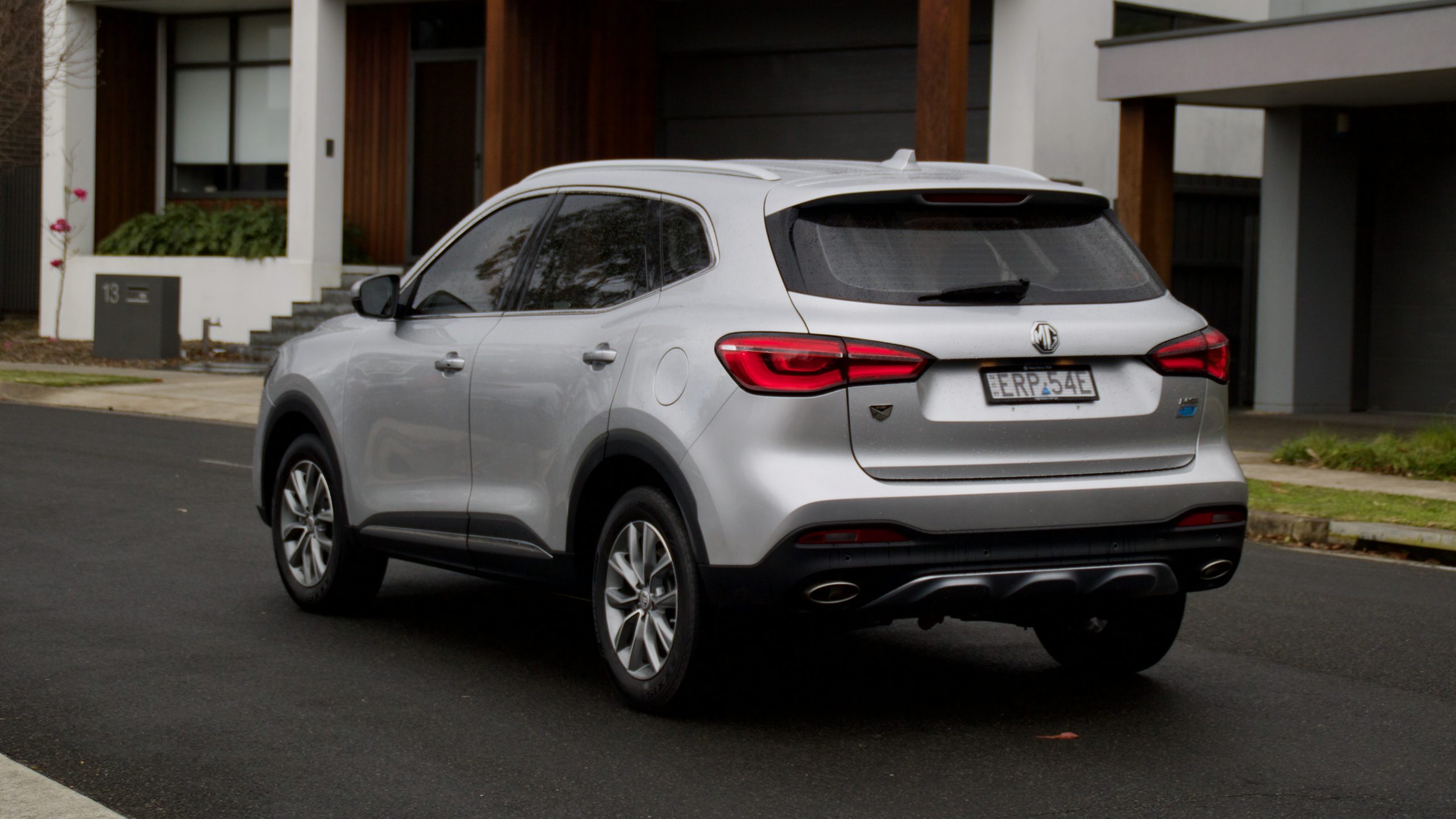
Over our week in the MG HS EV Plus Excite, we achieved 7.3 L/100km, which isn’t overly fantastic for a hybrid, and this included running it as a pure EV for two full charges. MG quotes a fuel usage of 1.7L/100km, and we assume this must have included almost purely running as an EV. Quite the disappointment, given we’ve found it easy to achieve figures around 5.3L/100km in the less expensive non-plug-in hybrid Toyota RAV4, for example.
MG quotes a pure EV range of 63km on a single charge, but we got a maximum of 50km with conservative driving. Charging is by a Type 2 AC port, and a 7kW charger will apparently take around five hours to fully charge. With the included three-pin charger, charging will take closer to nine hours. With the EV range and fuel usage we achieved from two full battery charges, and the 37-litre petrol tank full, a range of around 550km should be achievable.
Ride & Handling: 7/10
In terms of ride quality, the 2022 MG HS Plus EV Excite is commendable, with reasonable ride quietness and suppression of road and wind noise. Things do get noisier at highway speeds, but not unbearably so. The suspension also does a good job at providing occupants a buffer from the imperfections that litter Australian roads. The steering is light enough to make manoeuvring in and around whatever the city can throw it, quite easy – but don’t expect much engagement or feeling.
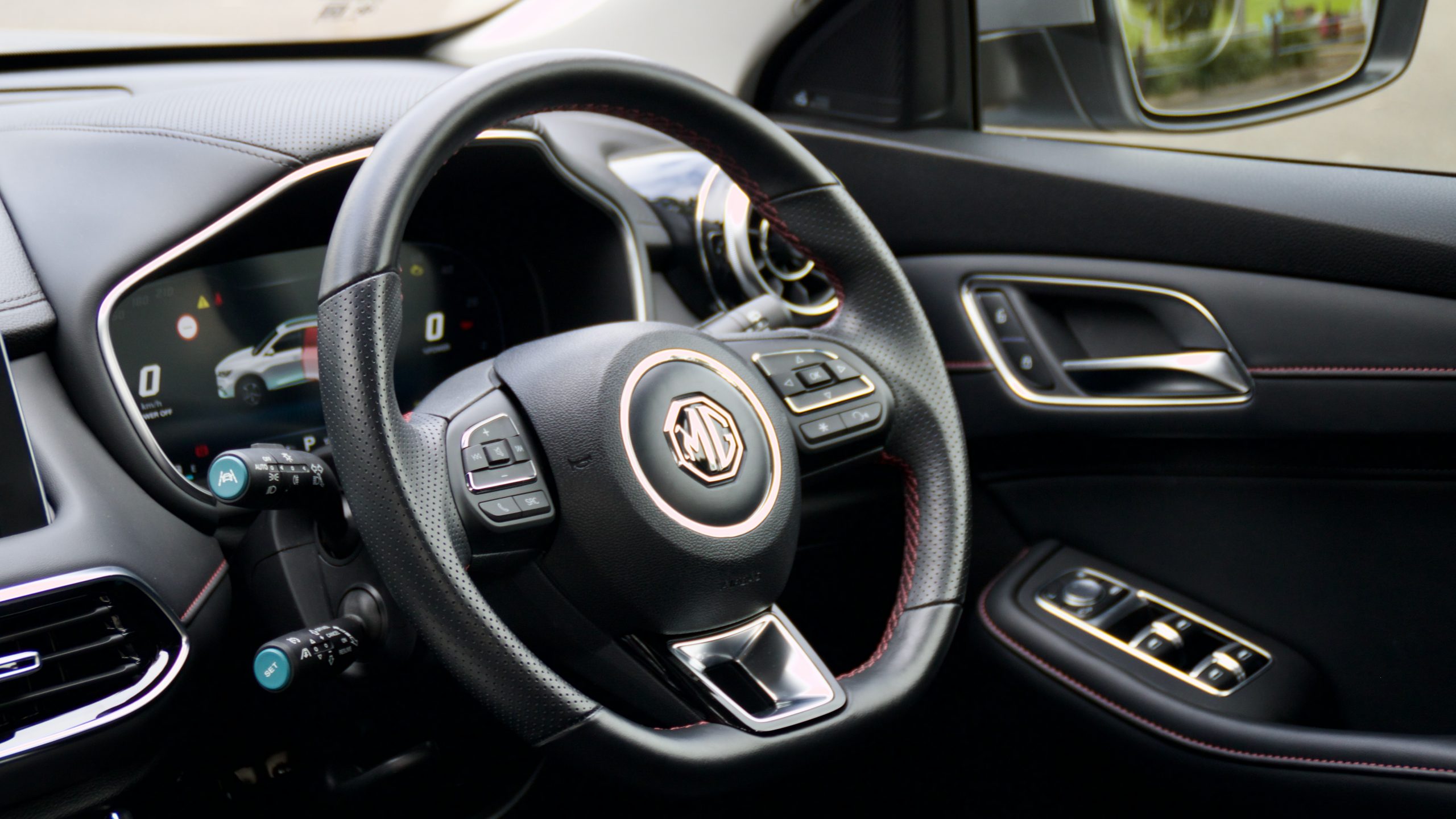

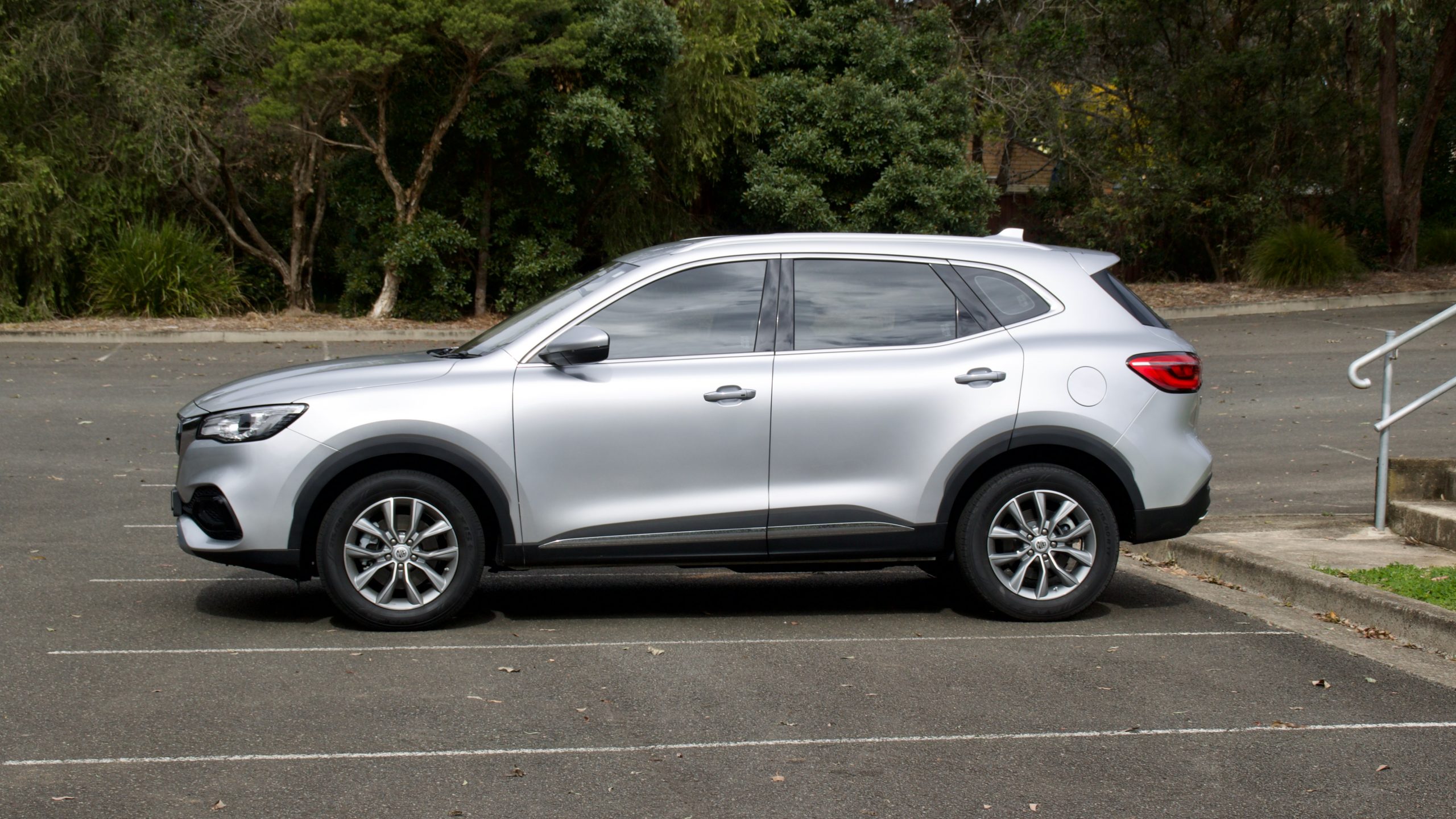

The extra weight that a plug in hybrid brings can definitely be felt in the way the HS Plus EV drives. While it’s generally predicable and safe in normal driving, try and push it harder and you won’t be rewarded. A driver’s car the HS is not. This is a moot point though, given this is a car focused on efficiency, not sporty driving. Visibility all around the car is quite good which is welcome in a segment where this isn’t always the case. The MG Pilot suite of safety assistance features generally does an okay job, but we did find the auto braking to be very sensitive, even on low sensitivity. Another bugbear with the system is that the blind spot monitoring indicators aren’t on the mirrors as with most cars, but are tiny, dim lights on the A pillars. This makes the system hard to see when looking at the side mirrors.
Interior & Practicality: 7/10
First impressions of the inside of the 2022 MG HS Plus EV Excite are of a modern and spacious space. Material quality is generally quite good, with plenty of soft touch materials throughout the cabin, covering all of the common touch points. The faux leather covering on the seats isn’t exactly the highest quality, but we found it more than acceptable. Switchgear throughout is also quite good – we particularly liked the tactical feel of switching the side air registers on and off.
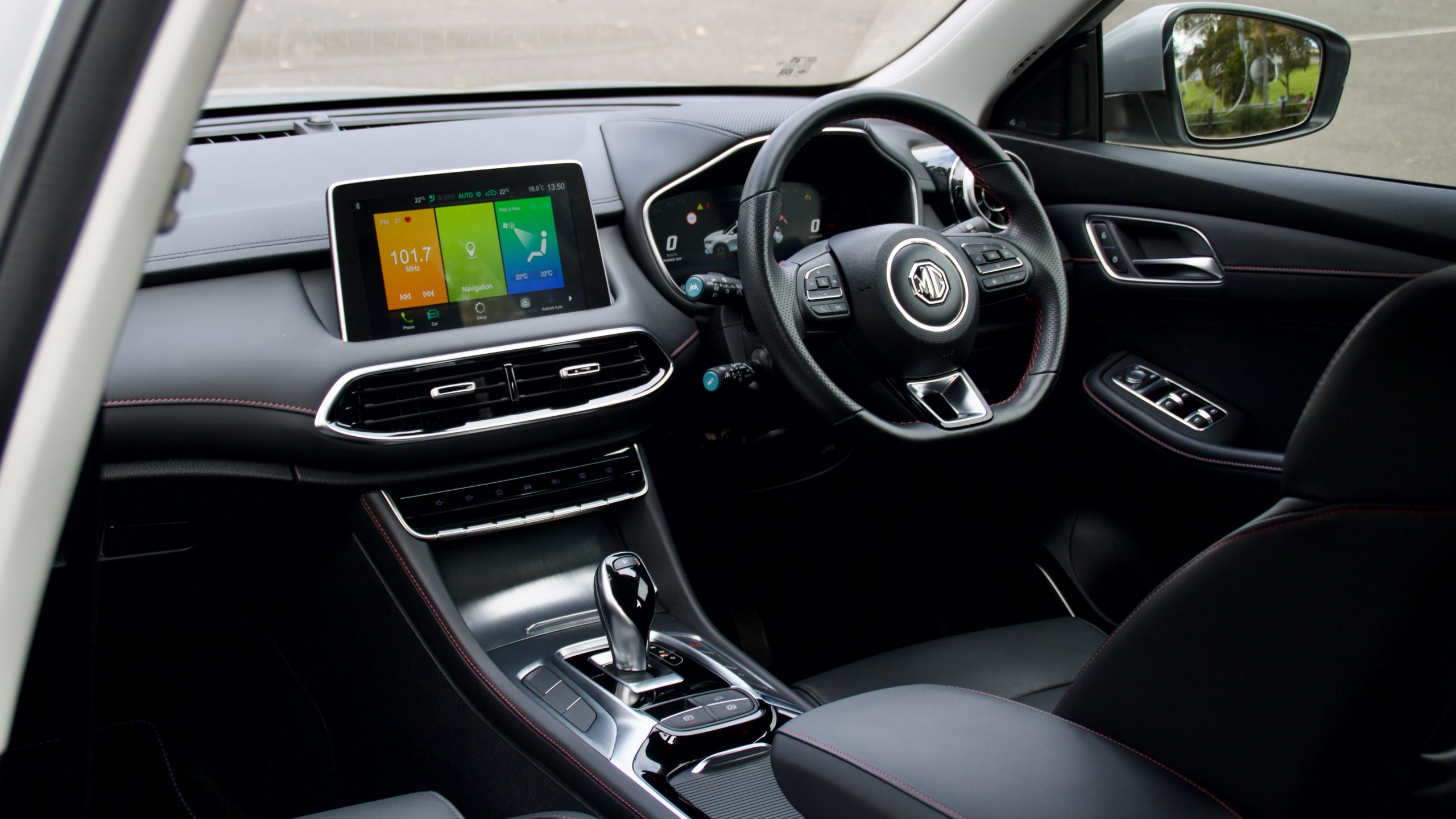
The front seats aren’t great – there’s only six ways of electric adjustment, which makes the driving position awkward. Ahead of the driver sits a 12.3-inch digital instrument cluster, which has a great quality LCD screen but limited software. One particular annoyance was that in lieu of a tachometer was a ‘power percentage’ displayed as a number on the right hand side, which was easy to confuse with speed, which was on the left hand side, also shown as a number.
Storage throughout the cabin is good with a reasonable centre console box, large glove box and capacious door bins. The centre console could have done with a phone storage cubby, however, as without one plugging a phone in for infotainment led to cables trailing through the gear shifter area.
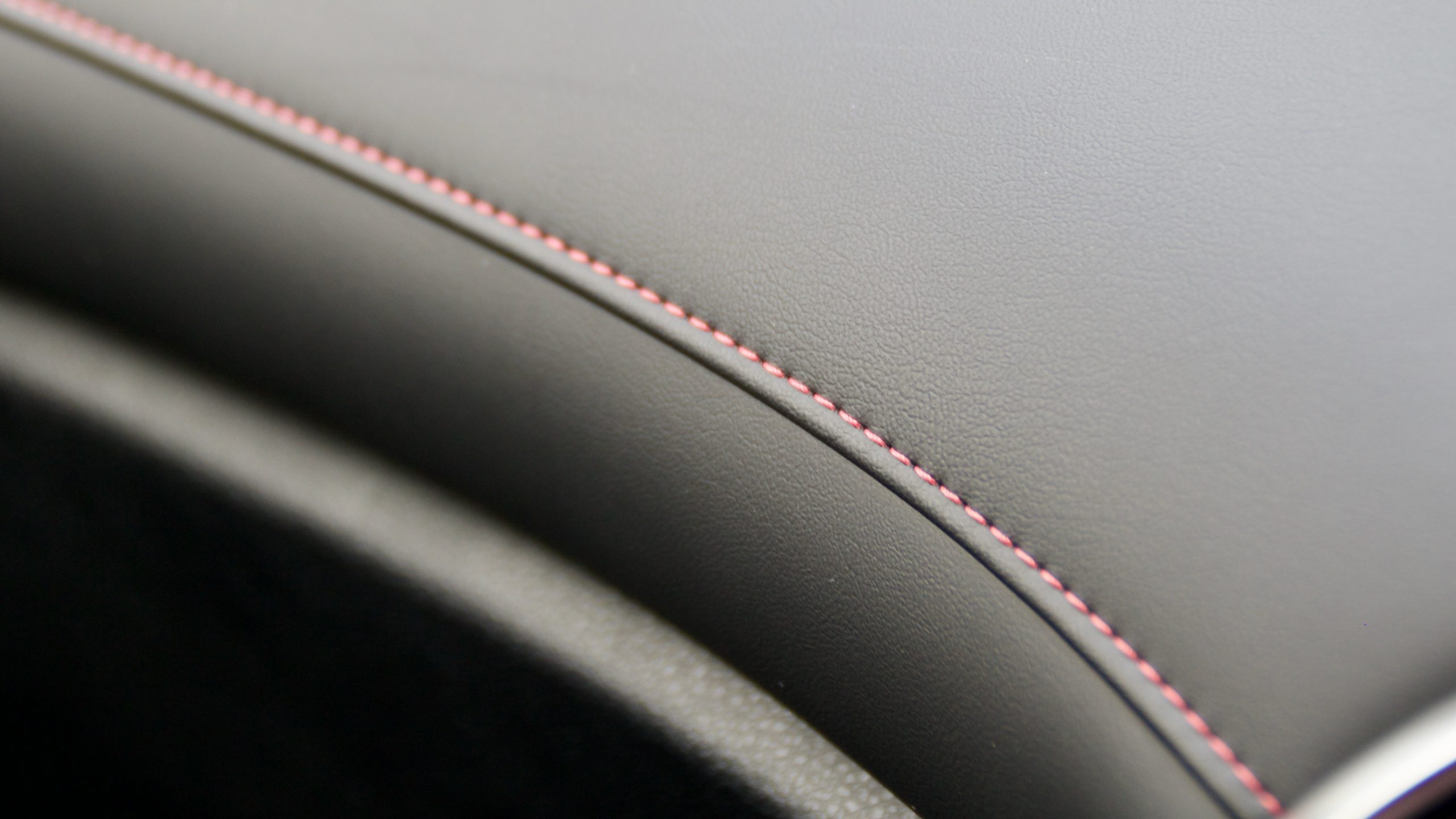
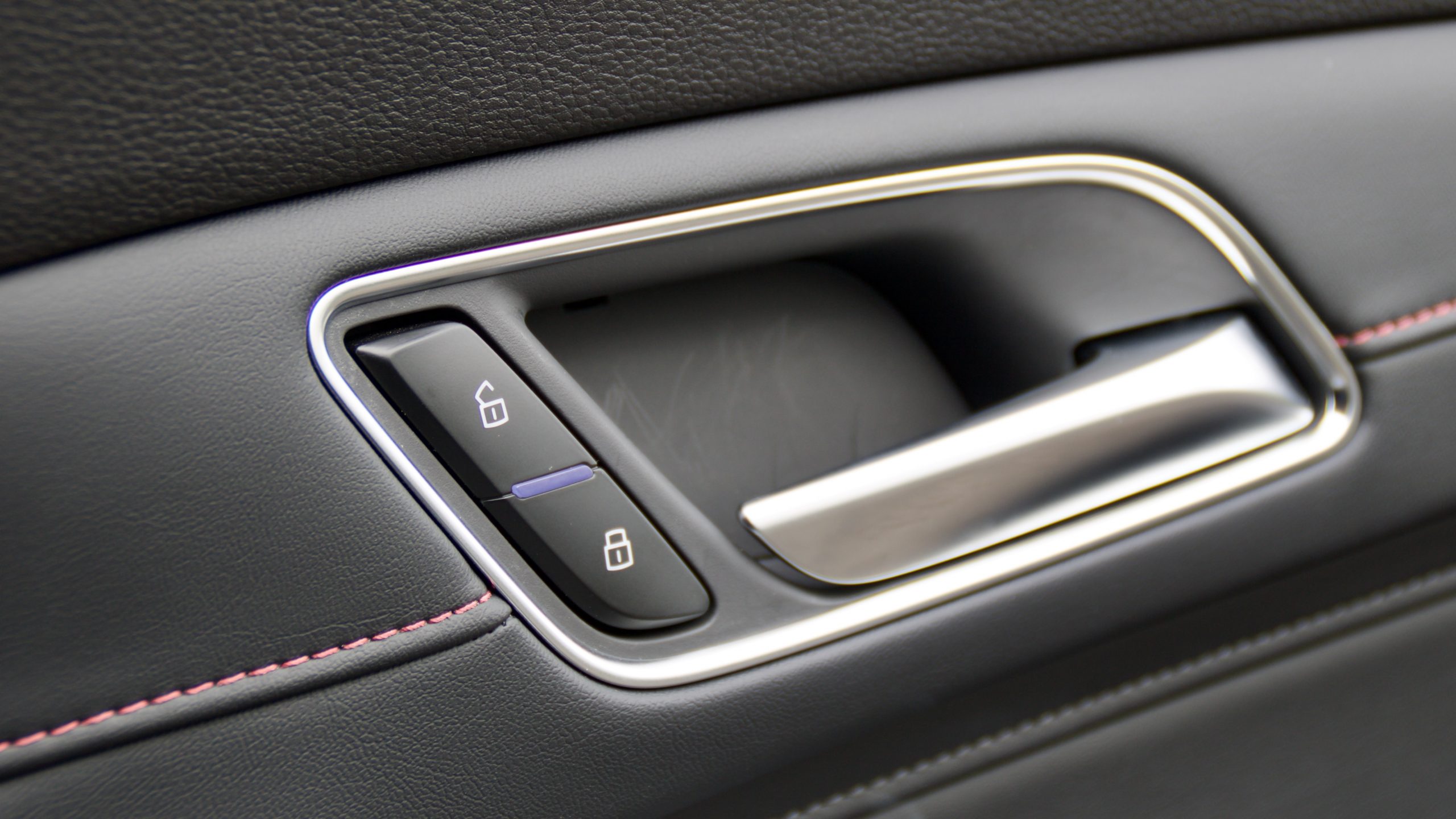
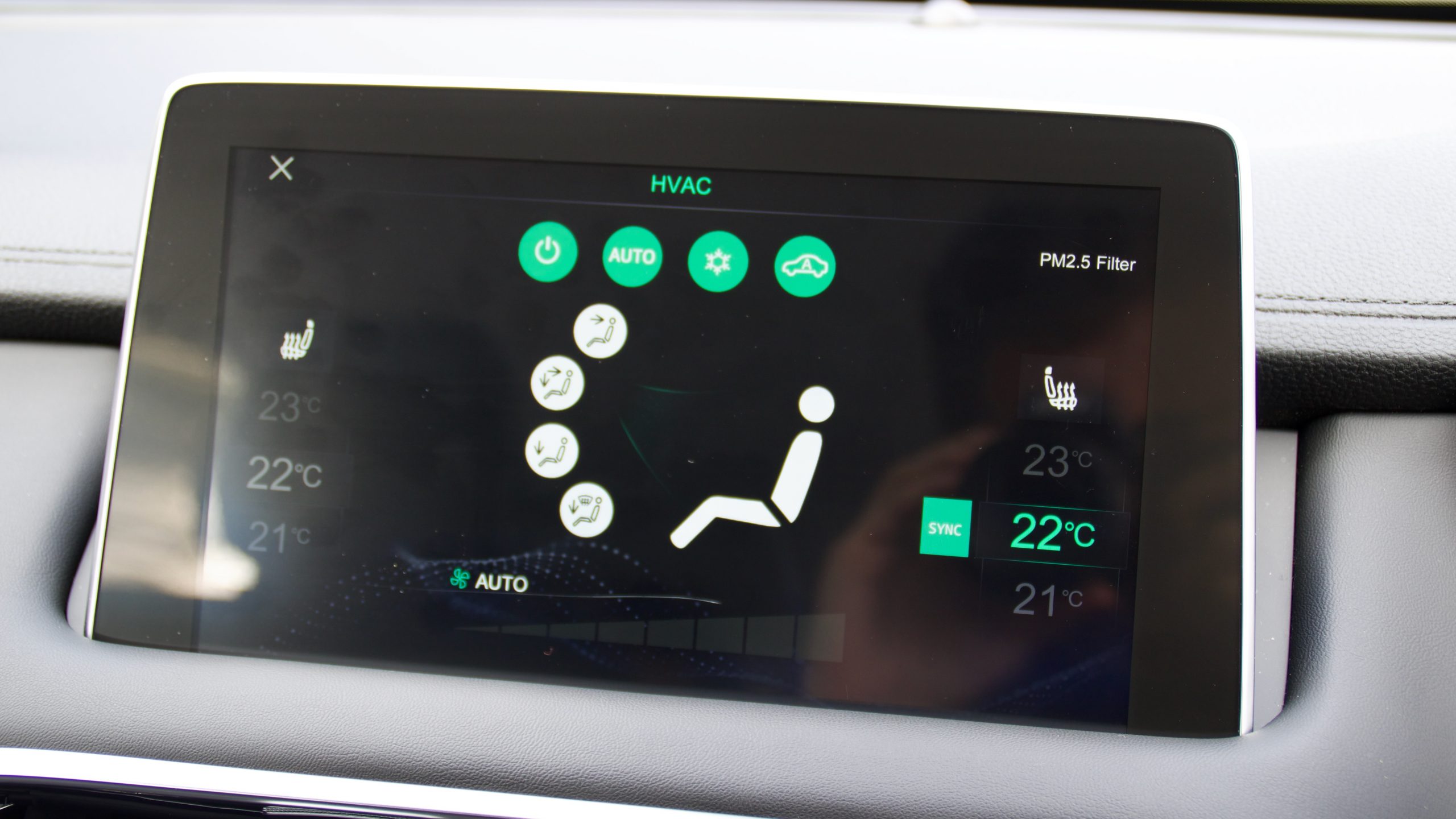
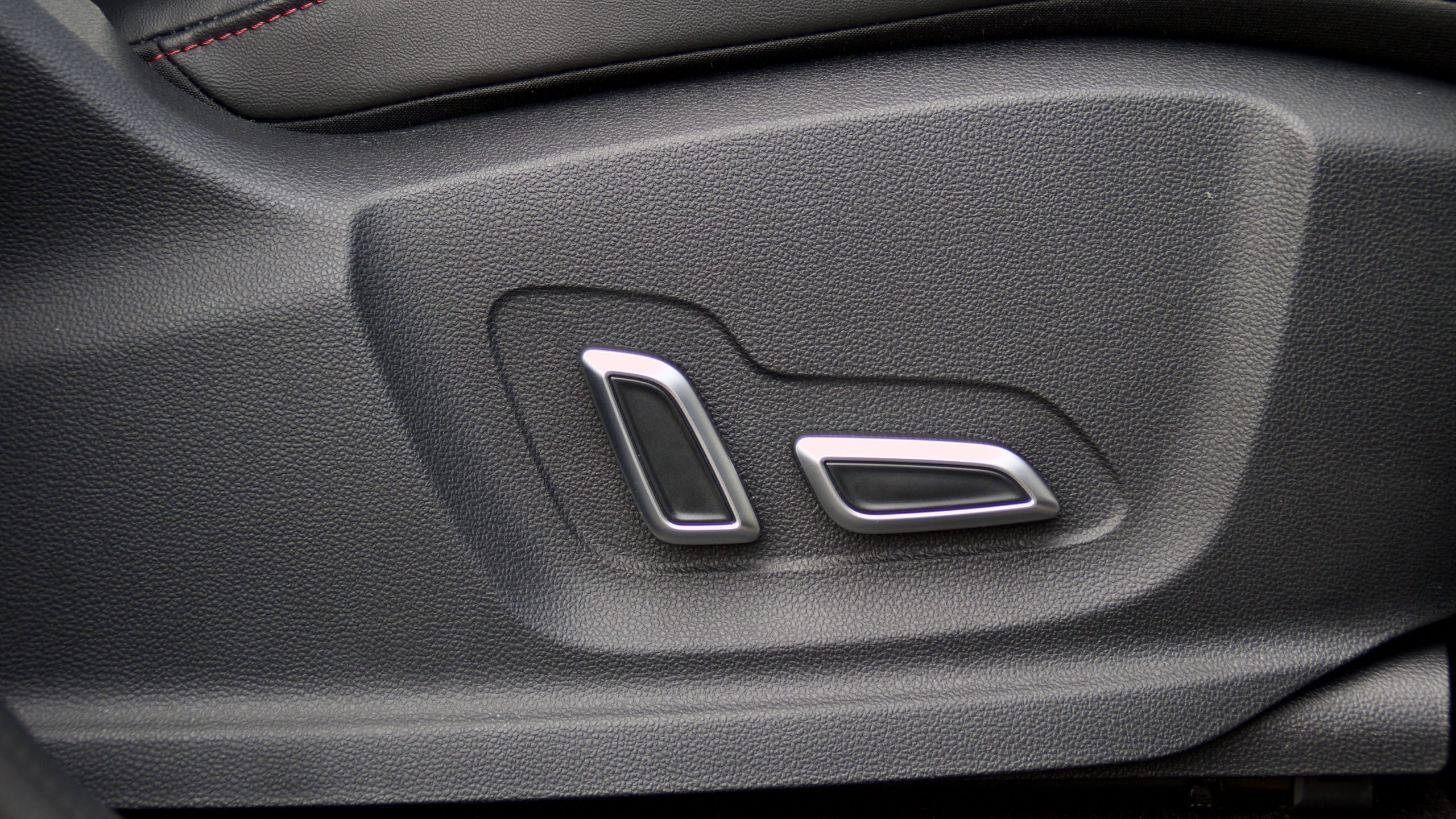
The infotainment screen itself is large and has a high resolution with wired Apple CarPlay and Android Auto, the useful USB and Bluetooth inputs plus satellite navigation. Where it comes apart is the poor interface design and what seems to be a slow processor running the show. Across our week, CarPlay consistently lagged and crashed. Menus across the system are poorly designed and inconsistent – finding and changing settings to adjust was not an intuitive process. All of this is a shame given the screen itself being of high quality. We hope that the HS gets the new system that’s in the new ZS EV soon.
The reversing camera display is good in terms of quality, but the camera is positioned strangely – the driver can see too much of the number plate. Sound is delivered to occupants via a six speaker system, which is underwhelming. Luckily both front seat passengers have a USB charging point, with the driver’s doubling as the infotainment input.
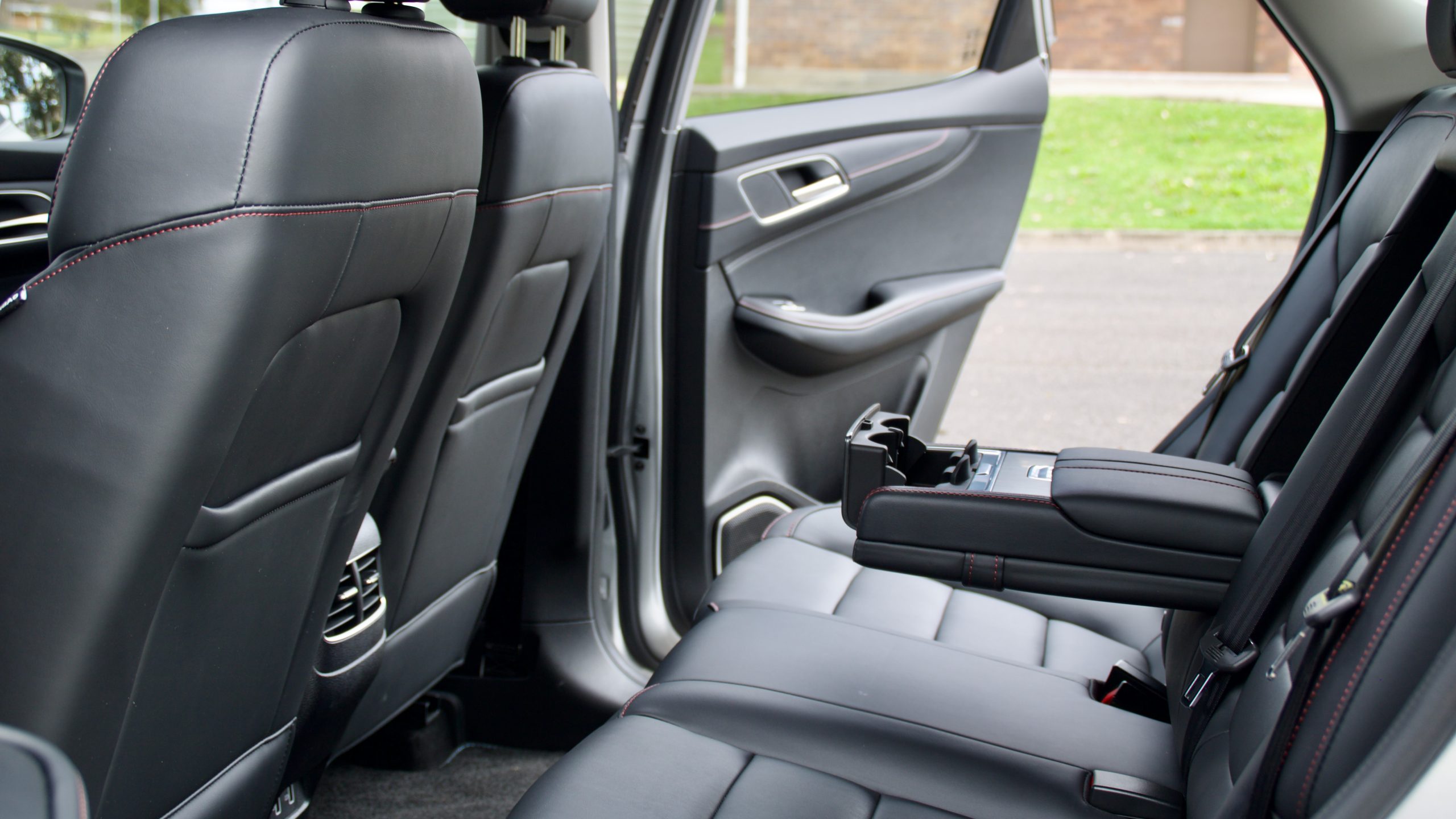
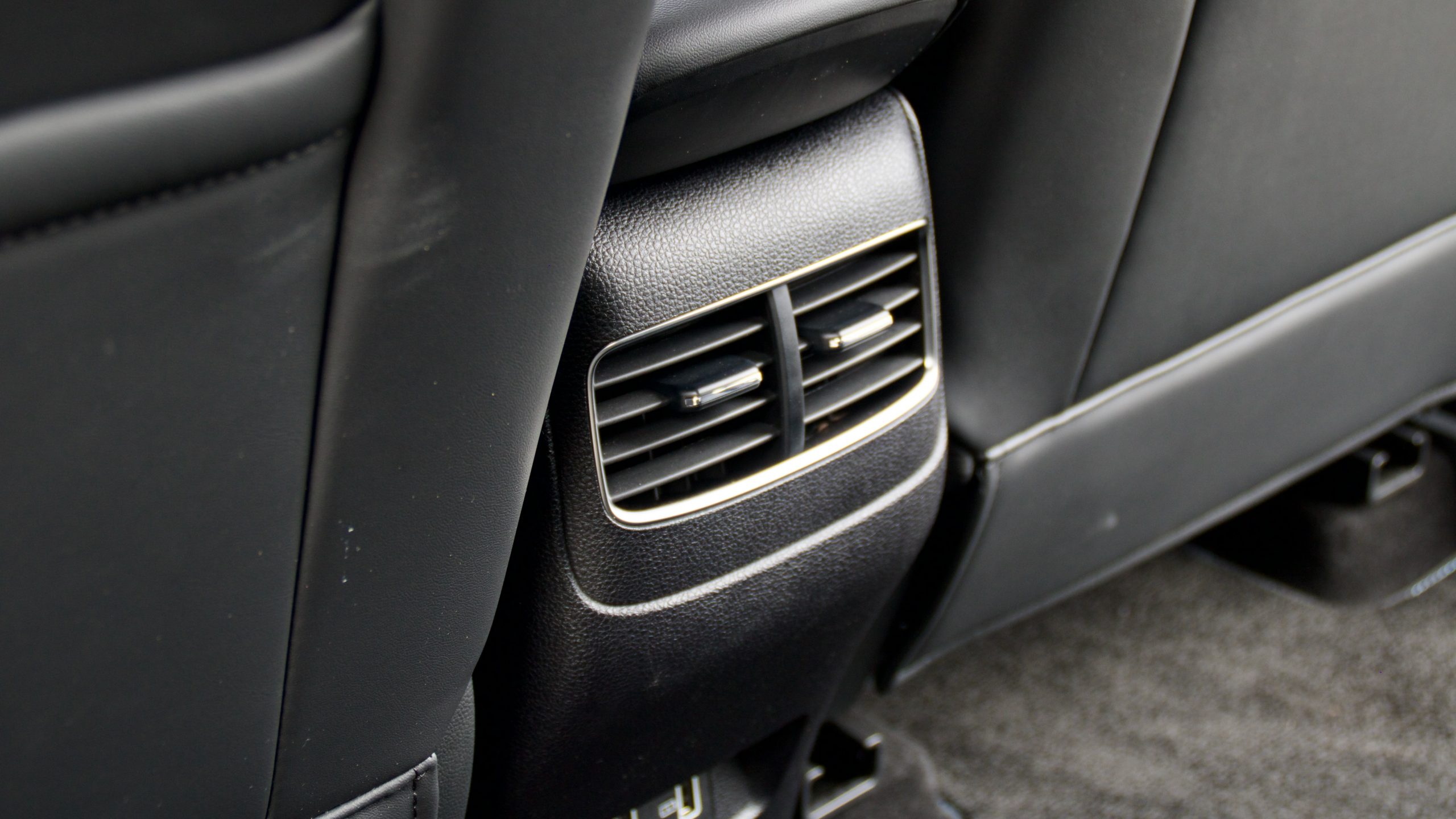
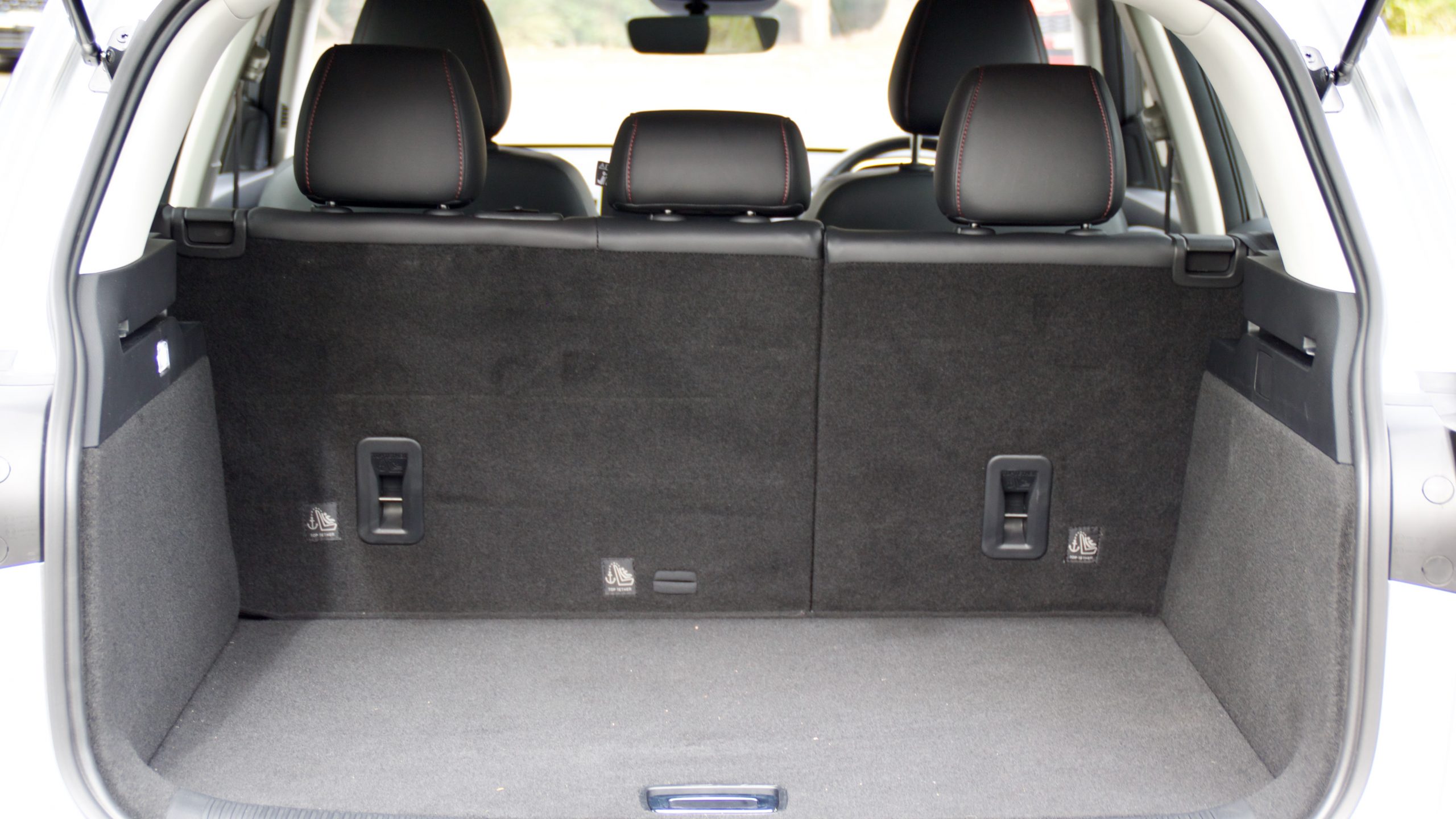
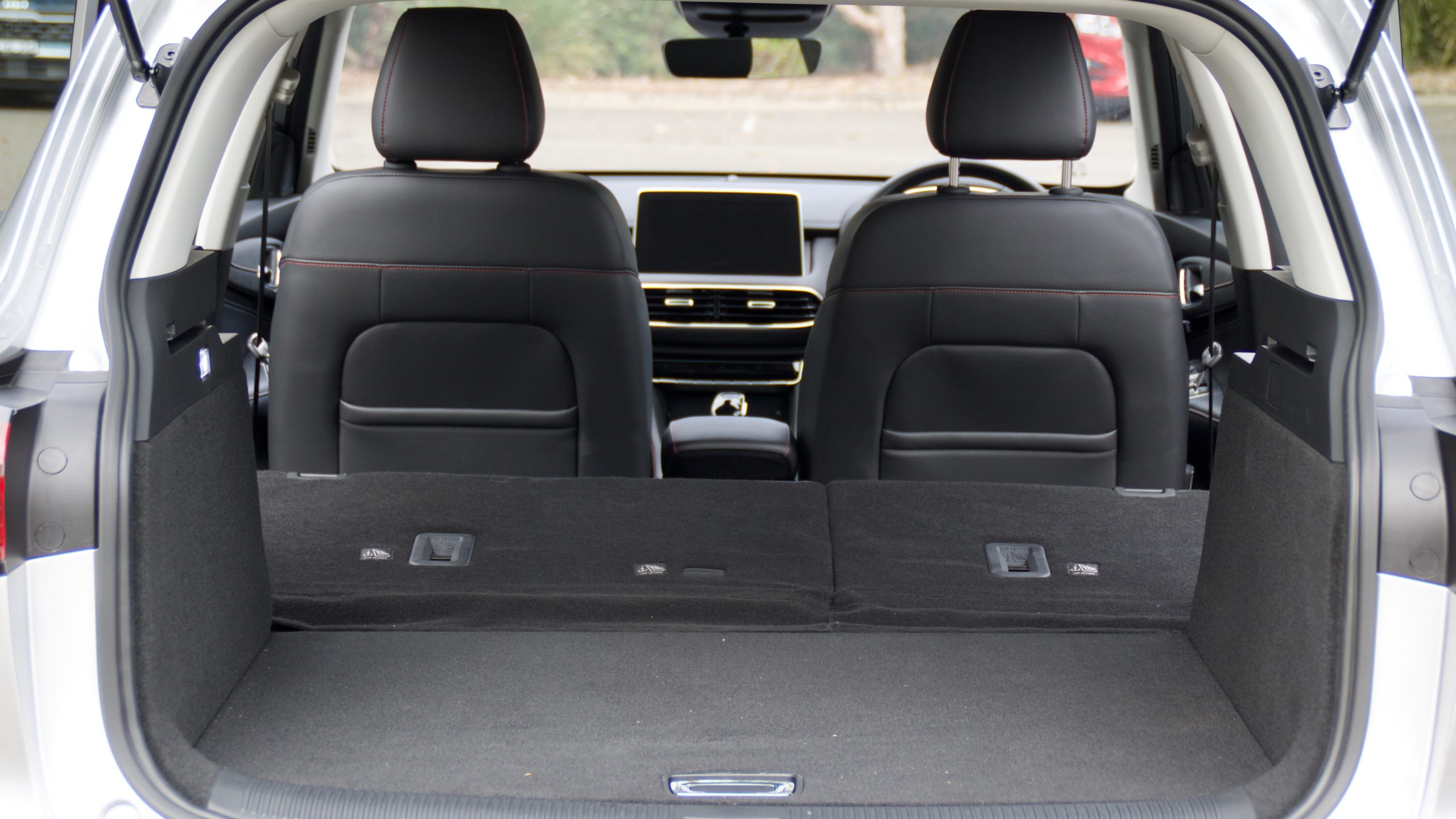
Moving to the second row, which is spacious and comfortable. Adult rear seat passengers will welcome above average head, leg and knee room. Even the middle seat is quite good with only a minimal transmission tunnel bump, meaning that three adults can travel in relative comfort if required, though it’s better suited to two adults and a child or shorter adult. Rear seat passengers have a good array of amenities with air vents, two USB charging points, map pockets and door bins.
The boot measures 451-litres, which is average in the mid-sized SUV category, amongst PHEV competitors is much bigger than the Eclipse Cross, but smaller than the Ford Escape. Folding the rear seats expands the space to 1,275L to the window line. The boot is otherwise fairly spartan, without tie down points or hooks – there’s no spare tyre.
Service & Warranty: 8/10
The 2022 MG HS Plus EV Excite gets a seven-year/unlimited km warranty, which includes the battery. This compares well to the Escape which carries a five year/unlimited warranty that extends to eight years/160,000km for the battery and electric drivetrain components but Mitsubishi bests both for the Eclipse Cross, with a five-year/100,000km warranty with eight years/160,000kms for the battery, which extends to a whopping 10 years/200,000km vehicle warranty if all logbook servicing has been completed by Mitsubishi dealers. MG includes seven years roadside assistance with the HS, compared with Mitsubishi’s maximum four-year term and Ford’s maximum seven years.
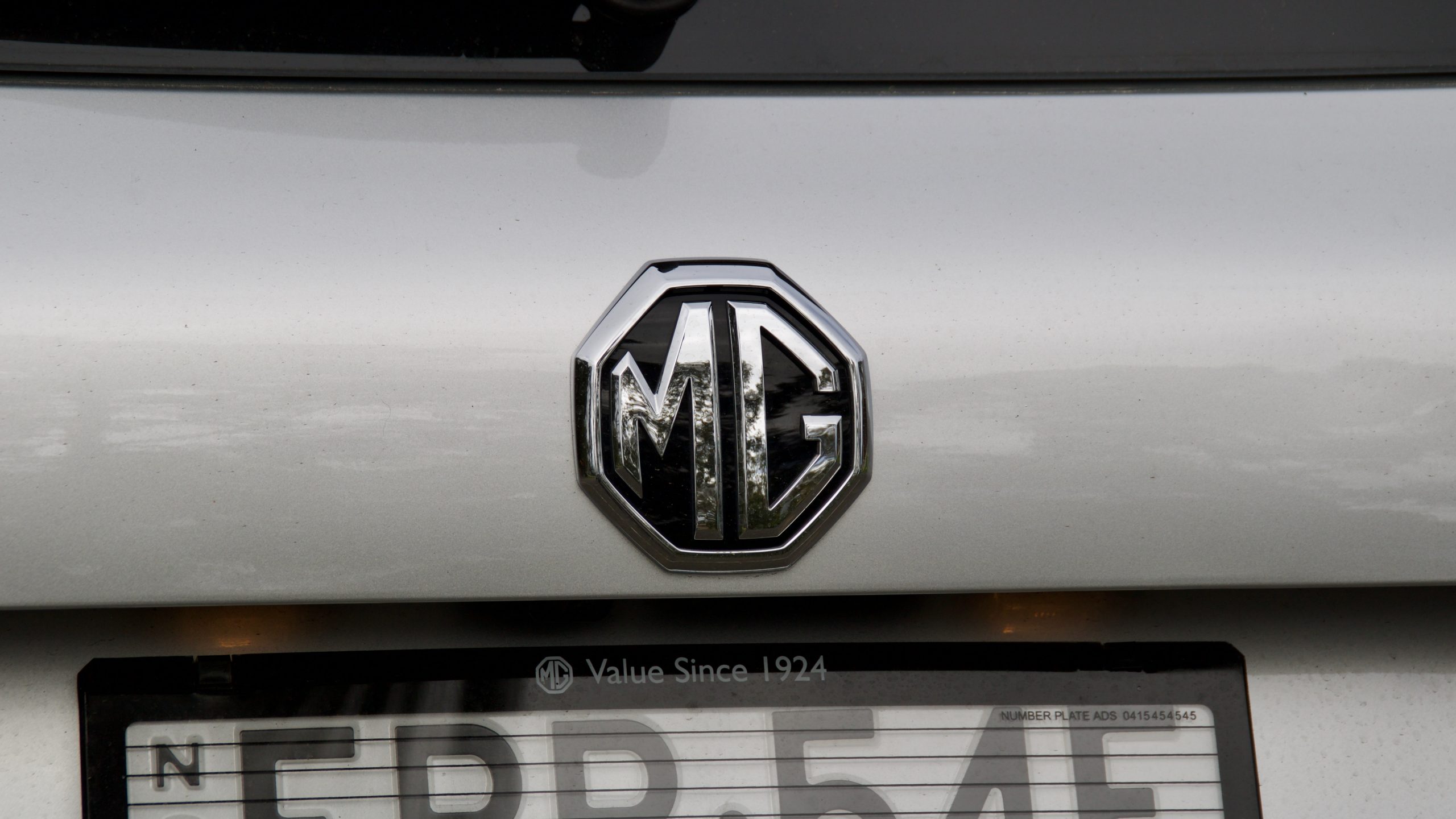
The HS Plus EV Excite has a capped price servicing period of seven years/70,000kms (whichever comes first), with service intervals of 12 months/10,000kms (whichever occurs first). Over the first five years, servicing will cost $1,589. Mitsubishi has a 10-year/150,000km capped price searching period for the Eclipse Cross, with 12 month/15,000km intervals, which costs $1,589 over the first five years. For the Escape, Ford requires servicing every 12 months/15,000kms (whichever comes first) and the first five years of servicing adds up to $1,531.
The 2022 MG HS Plus EV Excite DiscoverAuto Rating: 7.1/10
The HS Plus EV Excite does deliver on being Australia’s cheapest plug-in hybrid, but it’s at a cost. While it’s well equipped for the price, spacious and has a good warranty and servicing package it falls behind in other areas. For drivers who are happy to be more involved in their efforts to save on petrol but with the security of a plug-in hybrid to alleviate range anxiety, the HS EV Plus does make sense, as long as they keep it charged and run it as an EV. For these buyers we’d question the value equation of the Excite model, and suggest looking at the better value for money Essence.
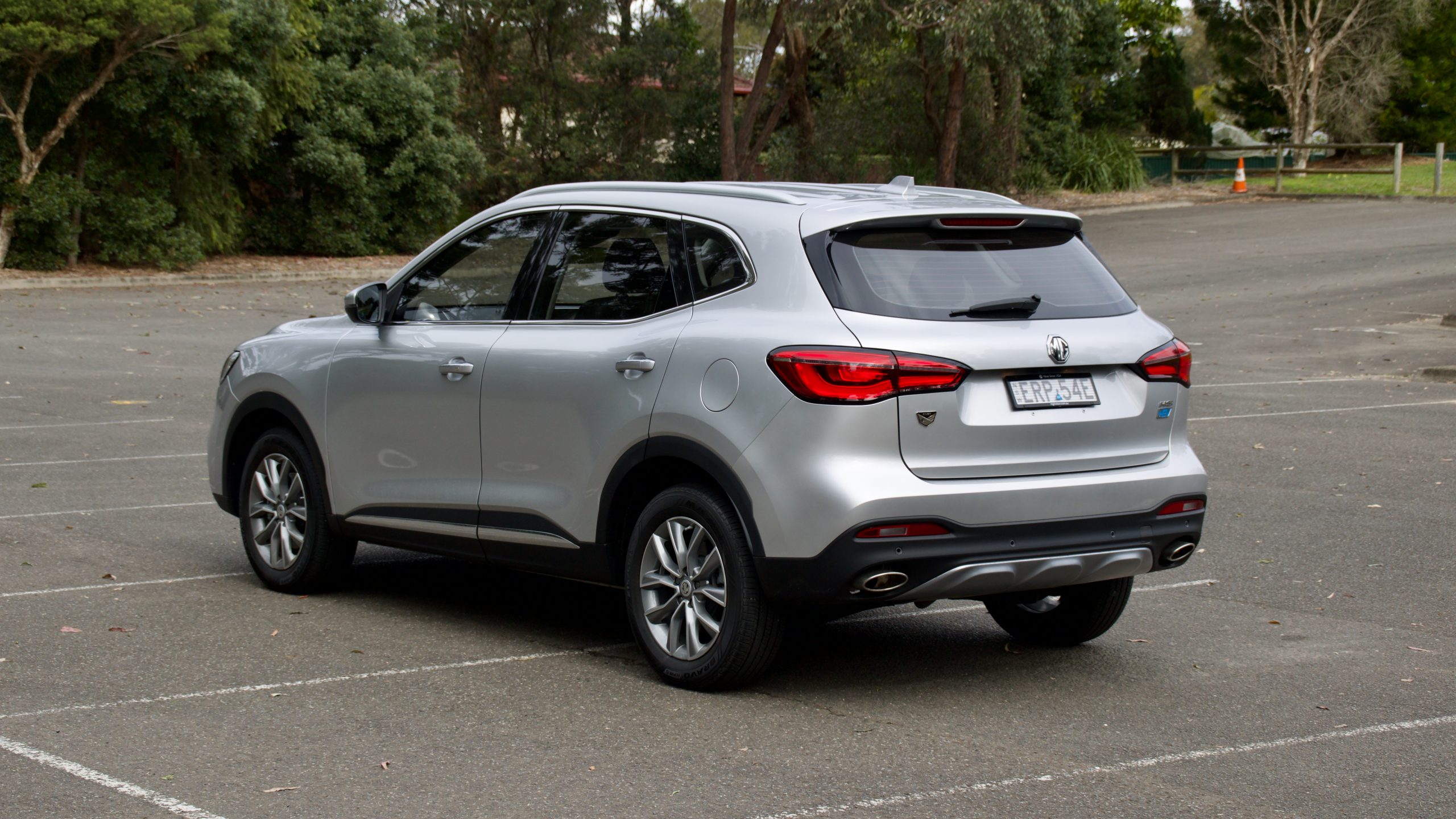
For buyers who want a set and forget hybrid solution, this is not it: they need to look at closed loop hybrids such as the Toyota RAV4 Hybrid, or the Haval H6 Hybrid, which manage significantly better fuel consumption with much less effort. While we applaud MG for attempting to bring the plug-in hybrid to the masses, it’s created a PHEV that isn’t a great hybrid, and that needs further thought put into the interior, especially the infotainment screen. That being said, buyers will appreciate the second row practicality and how comfortable it is to drive as well. We still think that the HS is worth consideration if you’re after an inexpensive way to lower fuel costs – just do your research first.
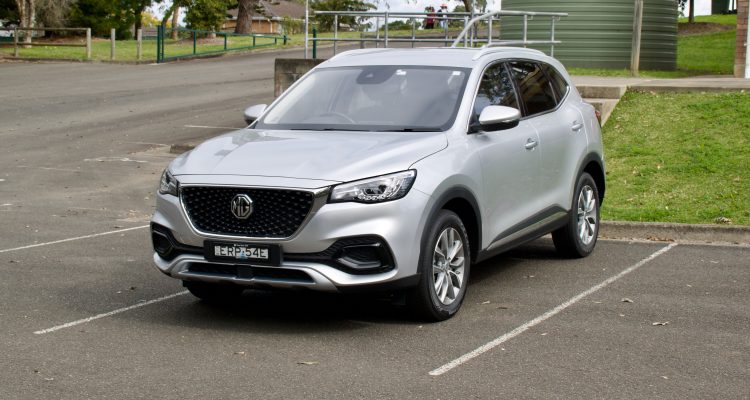
Leave a Reply